Special Report
How Free Is the Press in the World's Richest Countries
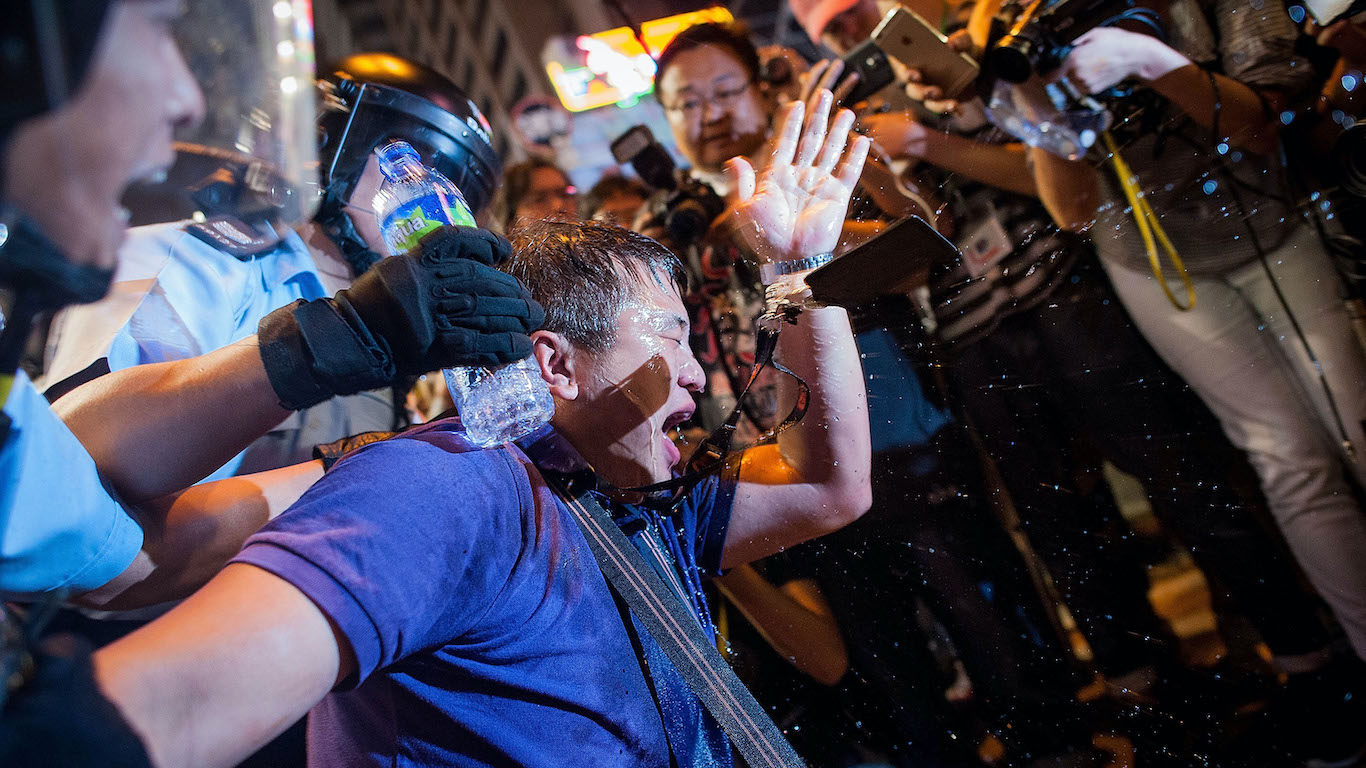
Published:

Across the world, freedom of the press is entering a critical era. Several crises, from the coronavirus pandemic to a polarized public — have serious consequences for journalism and global press freedom.
Prosperous nations, which include some of the largest and oldest elected democracies in the world, tend to have greater press freedom than poorer countries. But this trend is far from consistent. The 50 richest countries in the world based on GDP per capita rank anywhere from best in the world, to among the worst 10 countries for freedom of the press.
To compare press freedom in the world’s richest countries, 24/7 Wall St. reviewed 2020 World Press Freedom Index scores in the 50 countries with the highest gross domestic product (GDP) per capita. In its annual press freedom index, the non-profit organization Reporters Without Borders (RSF) measures freedom of information throughout the world by combining survey-responses of media experts, as well as counts of acts of violence against journalists.
Elected leaders in many democracies, which are known for having free and independent media, have tried to silence critical outlets and promote those that offer favorable coverage. Even the president of the United States, one of the oldest democracies and a country famous for its fierce defense of its First Amendment that guarantees freedom of the press, has frequently demonised the news media as the “enemy of the people.” His rhetoric has given succor to political leaders in other countries who have passed bills making “fake news” illegal, and have framed articles they don’t like as bogus news.
When it comes to press freedom, one region stands out. Scandinavian countries continue to lead the world, and western Europe media remains mostly free despite a few wobbles. These two regions lead the way in another important area — these are countries that have come closest to true gender equality.
Click here to see how free the press is in the world’s richest countries
Click here to read our methodology
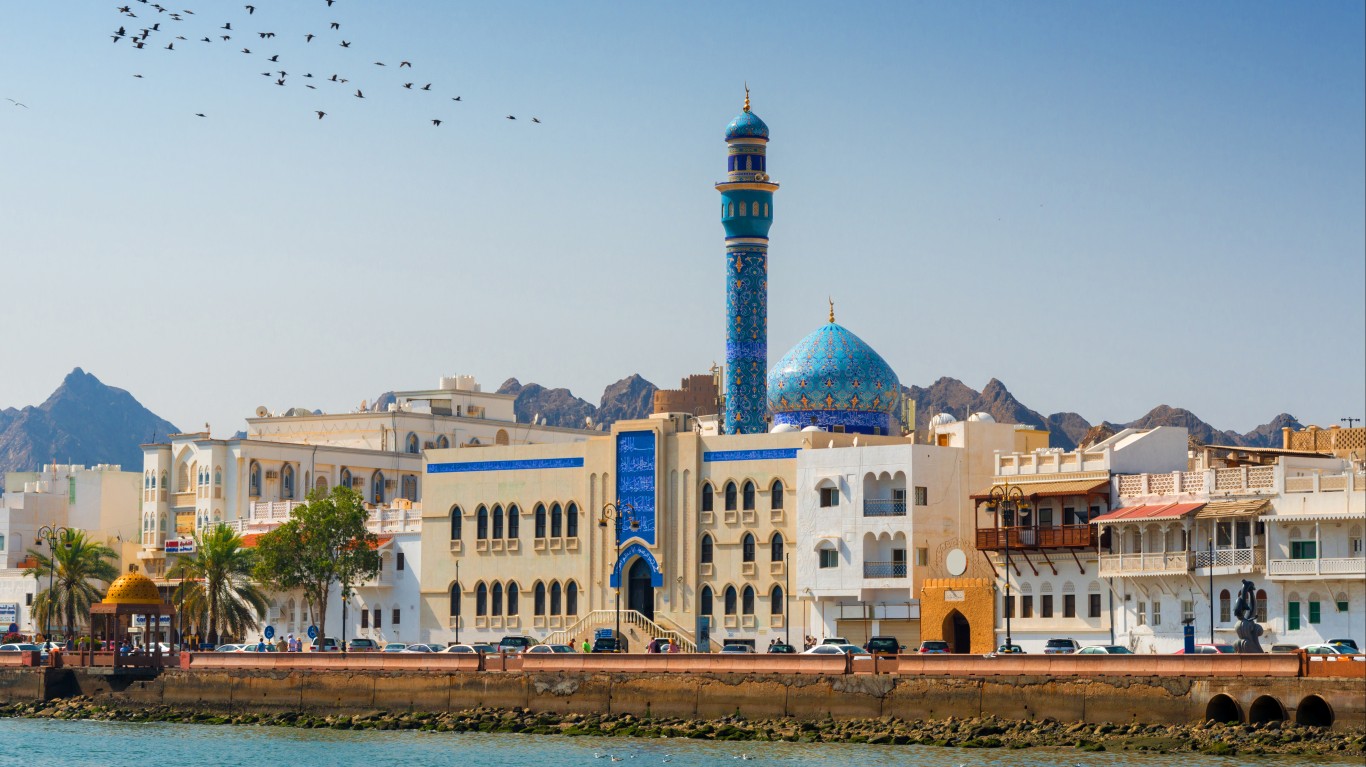
50. Oman
> Population: 4,974,986
> GDP per capita: $29,052
> Freedom of the press score in 2020: 43.4 — 135th out of 180 (“difficult”)
> Freedom of the press score in 2019: 43.4 — 132nd out of 180 (“difficult”)
> Worst area of press freedom: Media independence
> Best area of press freedom: Infrastructure
Oman, a small nation on the southeastern coast of the Arabian Peninsula, is classified as “not free” by Freedom House, a U.S.-based watchdog for democracy, political freedom, and human rights. The government has broad powers to shut down news outlets and websites and revoke licenses. Journalists are frequently harassed in the sultanate of 4 million people, and they can be arrested and detained incommunicado for charges such as insulting government authorities or trying to disrupt civil order. In 2016, two independent newspapers were shuttered or had operations suspended by the government.
[in-text-ad]
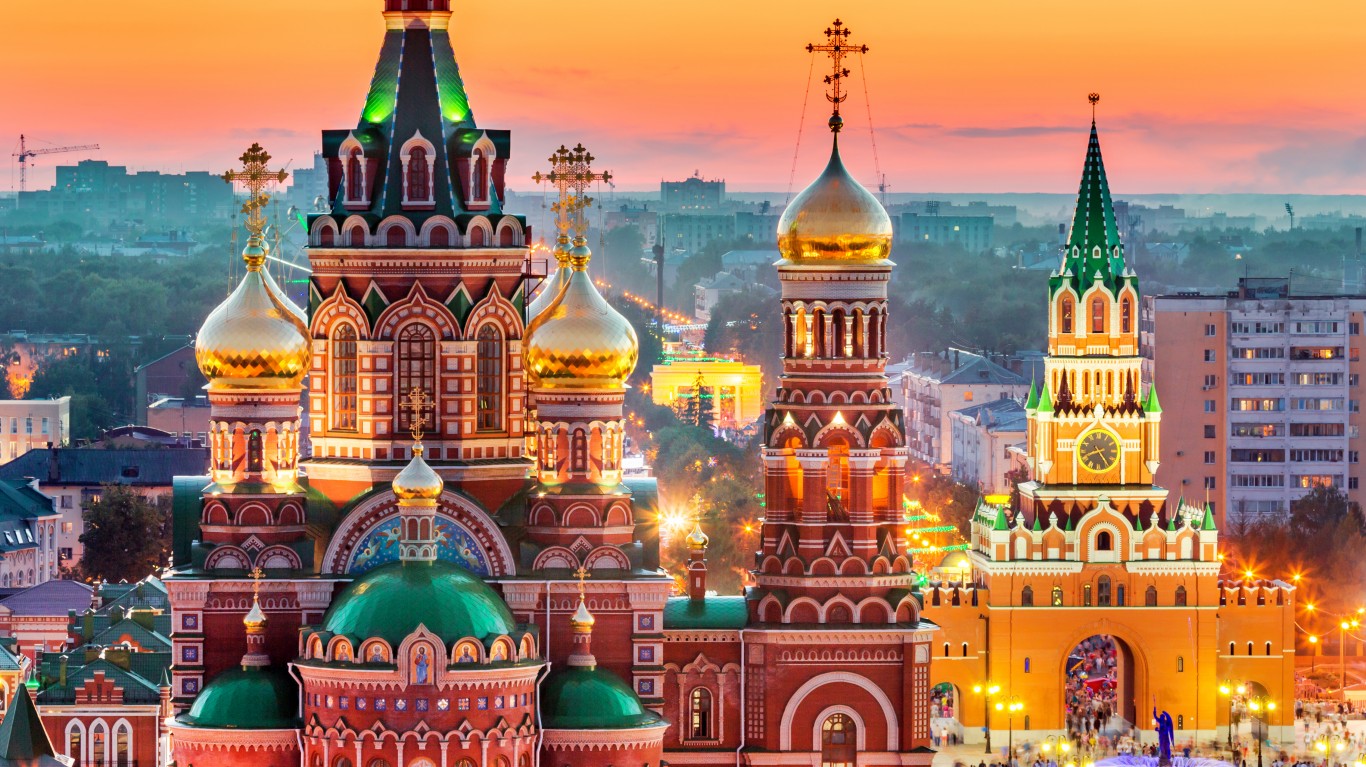
49. Russia
> Population: 144,373,535
> GDP per capita: $29,181
> Freedom of the press score in 2020: 48.9 — 149th out of 180 (“difficult”)
> Freedom of the press score in 2019: 50.3 — 149th out of 180 (“difficult”)
> Worst area of press freedom: Media independence
> Best area of press freedom: Legislative framework
Russia has one of the worst free press ratings in the world. Since anti-government protests in 2011 and 2012, free press has been stifled by website blocking and selectively applied laws that have landed journalists in prison. Meanwhile, television in the country pushes propaganda and is hostile towards members of the press trying to do their job fairly. Major TV networks in Russia are either state-run or managed by companies with close government ties.
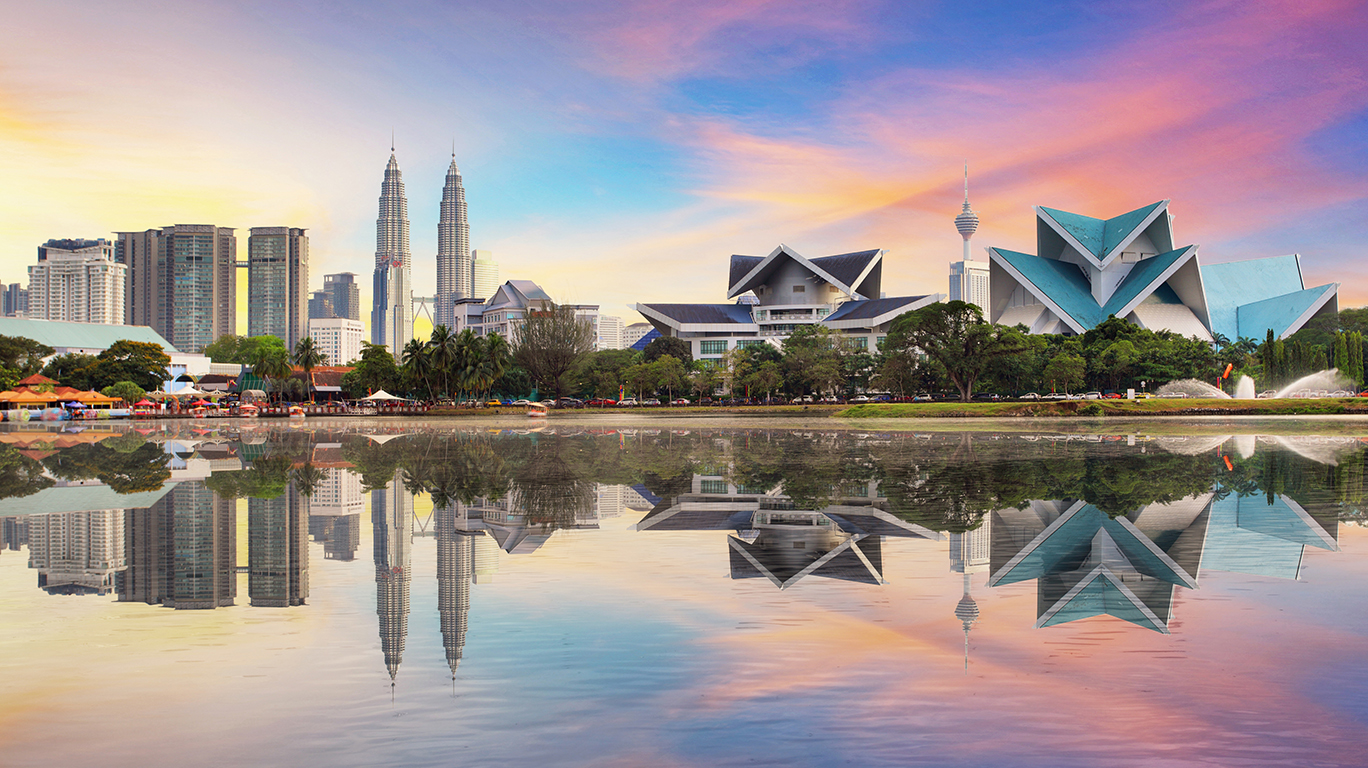
48. Malaysia
> Population: 31,949,777
> GDP per capita: $29,526
> Freedom of the press score in 2020: 33.1 — 101st out of 180 (“problematic”)
> Freedom of the press score in 2019: 36.7 — 123rd out of 180 (“difficult”)
> Worst area of press freedom: Media independence
> Best area of press freedom: Infrastructure
Press freedom began to improve in Malaysia in 2018 after the ruling coalition Barisan Nasional was defeated after governing the Asian nation since 1957. The new government began easing laws and regulations that restricted the press, and the media are now offering more diverse coverage. The government is taking steps to end the Anti-Fake News Act, which the former government had adopted in April 2018. Even so, legislation such as the Sedition Act, the Official Secrets Act, and the Communications and Multimedia Act that have been used to suppress the press and regulate publication licenses, remains on the books.

47. Croatia
> Population: 4,067,500
> GDP per capita: $29,973
> Freedom of the press score in 2020: 28.5 — 59th out of 180 (“problematic”)
> Freedom of the press score in 2019: 29.0 — 64th out of 180 (“problematic”)
> Worst area of press freedom: Media independence
> Best area of press freedom: Pluralism
Although Croatia’s score and ranking in the 2020 World Press Freedom Index has improved slightly since last year, the country’s situation for journalists remains “problematic,” according to RSF. The media enjoy a relatively high degree of independence, but investigative journalists, especially those looking into corruption, organized crime, or war crimes, are often targeted. It’s illegal to publish “humiliating” content, as well as to insult the republic, flag, or national anthem.
Croatian radio-TV, HRT, owned by the state, is financed by advertising and a license fee. However, officials often meddle in how it’s run. Journalists who voice their objections are often sued.
[in-text-ad-2]
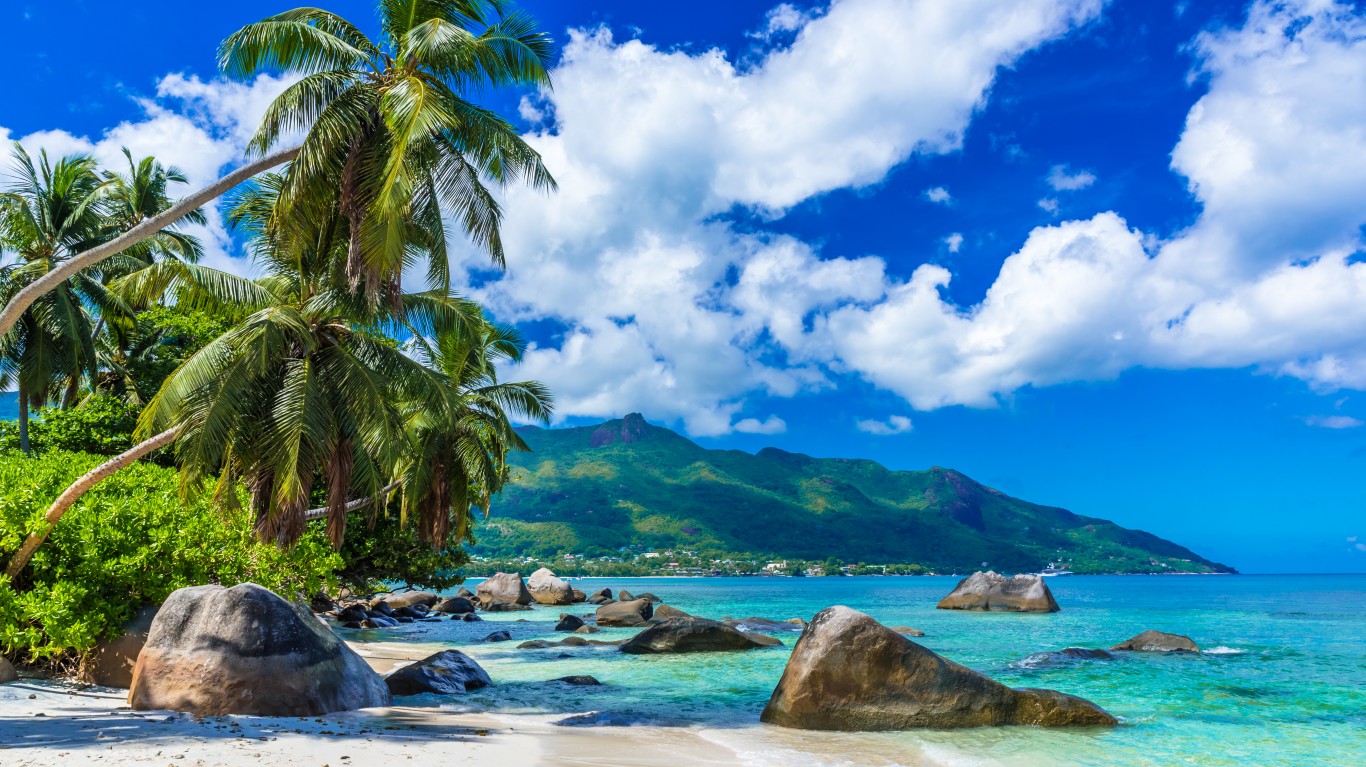
46. Seychelles
> Population: 97,625
> GDP per capita: $30,260
> Freedom of the press score in 2020: 28.7 — 63rd out of 180 (“problematic”)
> Freedom of the press score in 2019: 29.4 — 69th out of 180 (“problematic”)
> Worst area of press freedom: Media independence
> Best area of press freedom: Infrastructure
Media independence on the island nation in the Indian Ocean has been hampered by the country’s legacy of decades-long communist party rule. The government exercises considerable influence over communications in the Seychelles — the government owns the island’s only television station as well as two radio stations. However, a greater diversity of media choices are emerging, though independently owned media tends to be politically slanted. The press exercises self-censorship in regard to controversial national issues in deference to its tourism industry, which is important to the national economy.
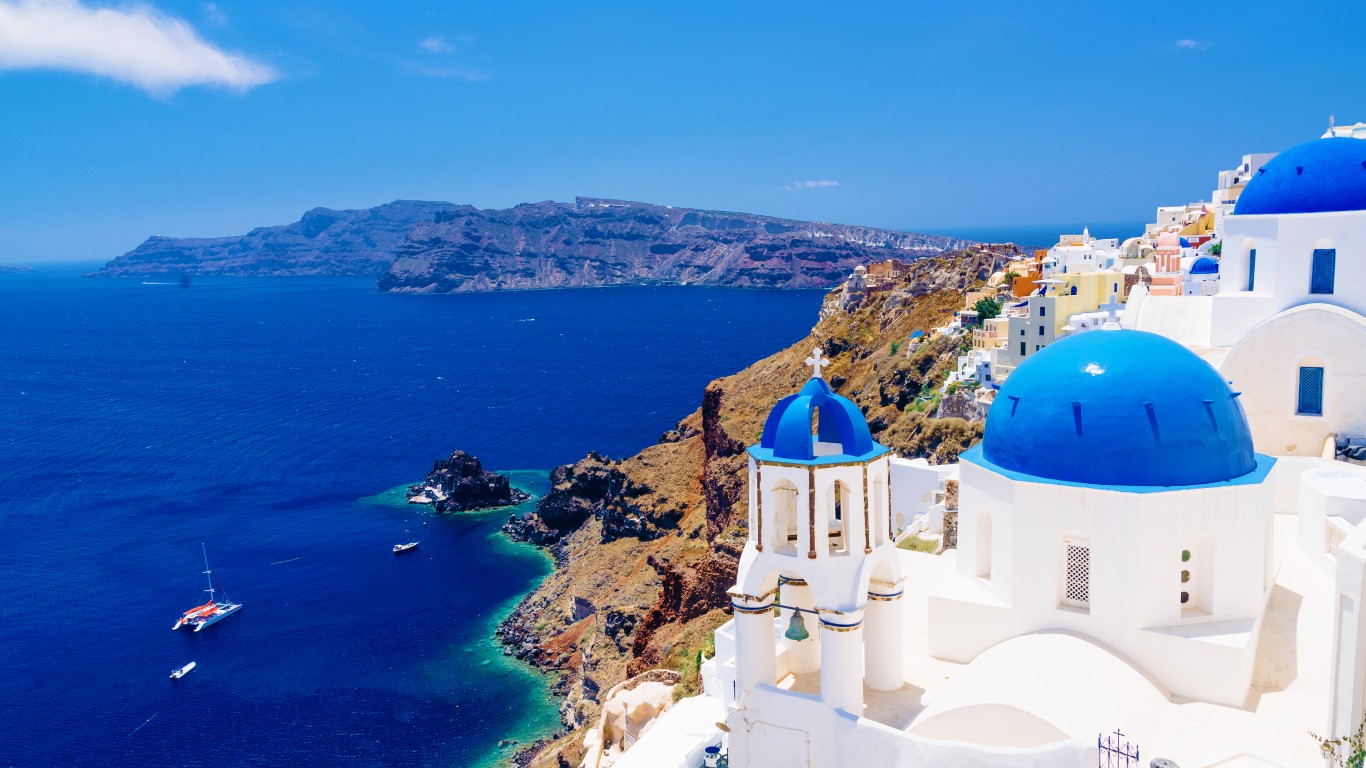
45. Greece
> Population: 10,716,322
> GDP per capita: $31,399
> Freedom of the press score in 2020: 28.8 — 65th out of 180 (“problematic”)
> Freedom of the press score in 2019: 29.1 — 65th out of 180 (“problematic”)
> Worst area of press freedom: Media independence
> Best area of press freedom: Legislative framework
Freedom of the press has improved slightly in Greece since last year, although the country still has one of the worst environments for censorship of the media among wealthy nations. Recently, journalists have been attacked and detained by police, and the headquarters of a weekly newspaper was raided by an anarchist group. Additionally, one broadcasting firm and the state news agency were both placed under the supervision of the country’s prime minister. Greater media independence and transparency would go a long way to improve press freedom in Greece.
[in-text-ad]
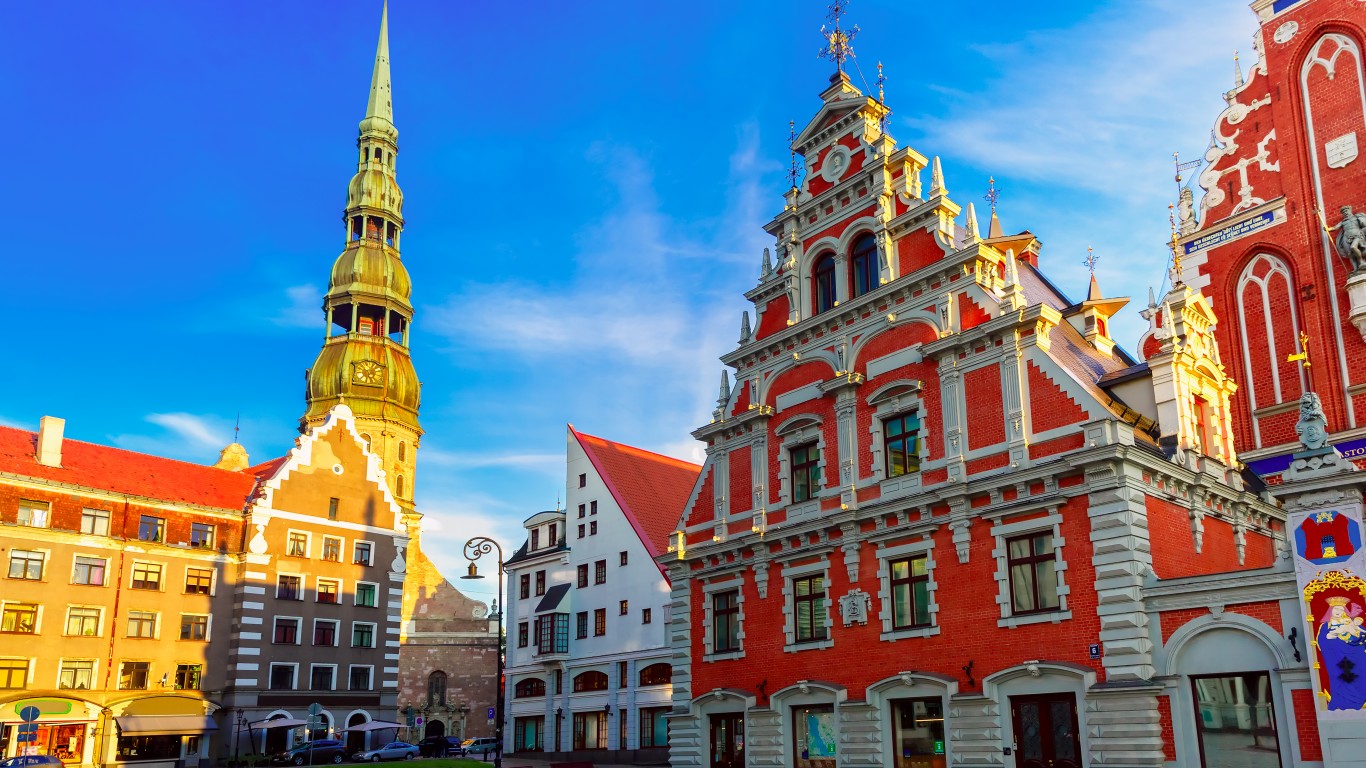
44. Latvia
> Population: 1,912,789
> GDP per capita: $32,204
> Freedom of the press score in 2020: 18.6 — 22nd out of 180 (“satisfactory”)
> Freedom of the press score in 2019: 19.5 — 24th out of 180 (“satisfactory”)
> Worst area of press freedom: Media independence
> Best area of press freedom: Legislative framework
Media outlets in Latvia are allowed to operate freely, face relatively few legal restrictions, and represent a wide range of political views. While Latvia ranks better than most wealthy countries for press freedom, the country is not without some troubling issues. Politicians regularly verbally attack media outlets and the country’s public media is woefully underfunded. Latvia’s media landscape is also growing less diverse as the country’s oldest TV channel was shut down in 2019 and its newsroom merged with another existing channel.

43. Romania
> Population: 19,356,544
> GDP per capita: $32,297
> Freedom of the press score in 2020: 25.9 — 48th out of 180 (“problematic”)
> Freedom of the press score in 2019: 25.7 — 47th out of 180 (“problematic”)
> Worst area of press freedom: Media independence
> Best area of press freedom: Legislative framework
Out of the 180 nations reviewed by Reporters Without Borders, Romania ranks 48th for press freedom. Unlike many wealthy countries that rank higher, Romania’s political and ruling class encourages censorship by pressuring journalists to reveal sources and minimize criticism of leadership. Corruption in the media undercuts journalistic integrity and news outlets often act as a medium for political propaganda.
Although Romania’s press is considered to be more free than the press in most of the rest of the world, it lags behind most of the 50 wealthy countries on this list.

42. Panama
> Population: 4,246,439
> GDP per capita: $32,762
> Freedom of the press score in 2020: 29.8 — 76th out of 180 (“problematic”)
> Freedom of the press score in 2019: 29.8 — 79th out of 180 (“problematic”)
> Worst area of press freedom: Media independence
> Best area of press freedom: Legislative framework
Of all wealthy countries in both North and South America, Panama ranks as having the worst free press. Though most media outlets in the country are privately owned, the government still controls access to information and pressures media companies through allocation of state advertising revenue. Journalists in the country are often fined through defamation cases when they are critical of government policy or cover corruption.
Despite these and other problems, press freedom is far better in Panama than it is in many of its poorer regional neighbors.
[in-text-ad-2]
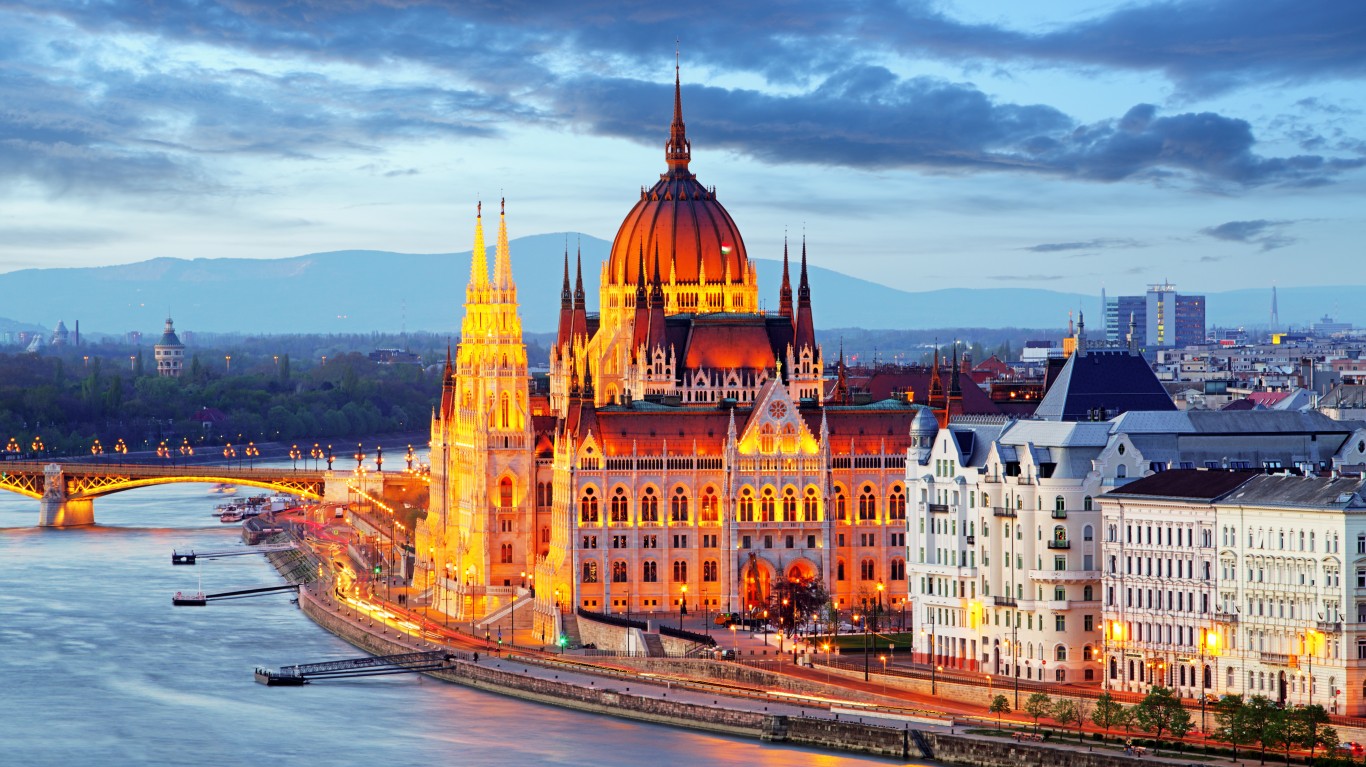
41. Hungary
> Population: 9,769,949
> GDP per capita: $33,979
> Freedom of the press score in 2020: 30.8 — 89th out of 180 (“problematic”)
> Freedom of the press score in 2019: 30.4 — 87th out of 180 (“problematic”)
> Worst area of press freedom: Media independence
> Best area of press freedom: Pluralism
Hungary’s ruling party has tight control over the country’s media landscape — which is dominated by a pro-government foundation. Independent journalists in the country are banned from certain events and from asking questions to members of parliament. Generally, politicians who hold power do not give interviews to outlets that are critical of the government. Investigative reporting on government corruption is generally published through online outlets.
Greater media independence and transparency would greatly improve press freedom in Hungary.
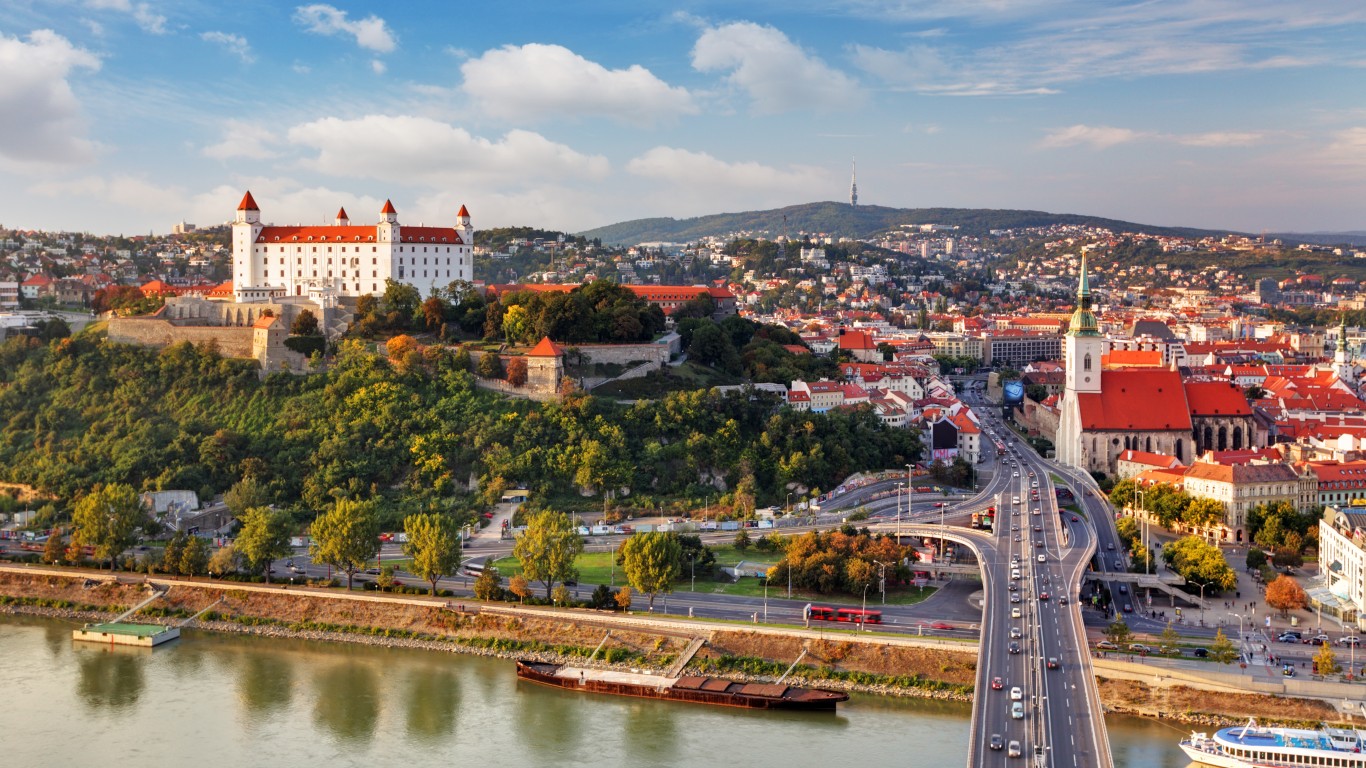
40. Slovakia
> Population: 5,454,073
> GDP per capita: $34,178
> Freedom of the press score in 2020: 22.7 — 33rd out of 180 (“satisfactory”)
> Freedom of the press score in 2019: 23.6 — 35th out of 180 (“satisfactory”)
> Worst area of press freedom: Media independence
> Best area of press freedom: Legislative framework
As is the case in many of the world’s wealthiest countries, press freedom in Slovakia is hampered by government influence and a lack of transparency. In 2018, an investigative journalist was murdered in Slovakia. The killing is believed to have been orchestrated by a businessman who had been surveilling other journalists and had close ties to judges and political figures.
Many major outlets in the country are owned by one of two financial groups — Penta or J&T — and all newspapers are privately owned.
[in-text-ad]
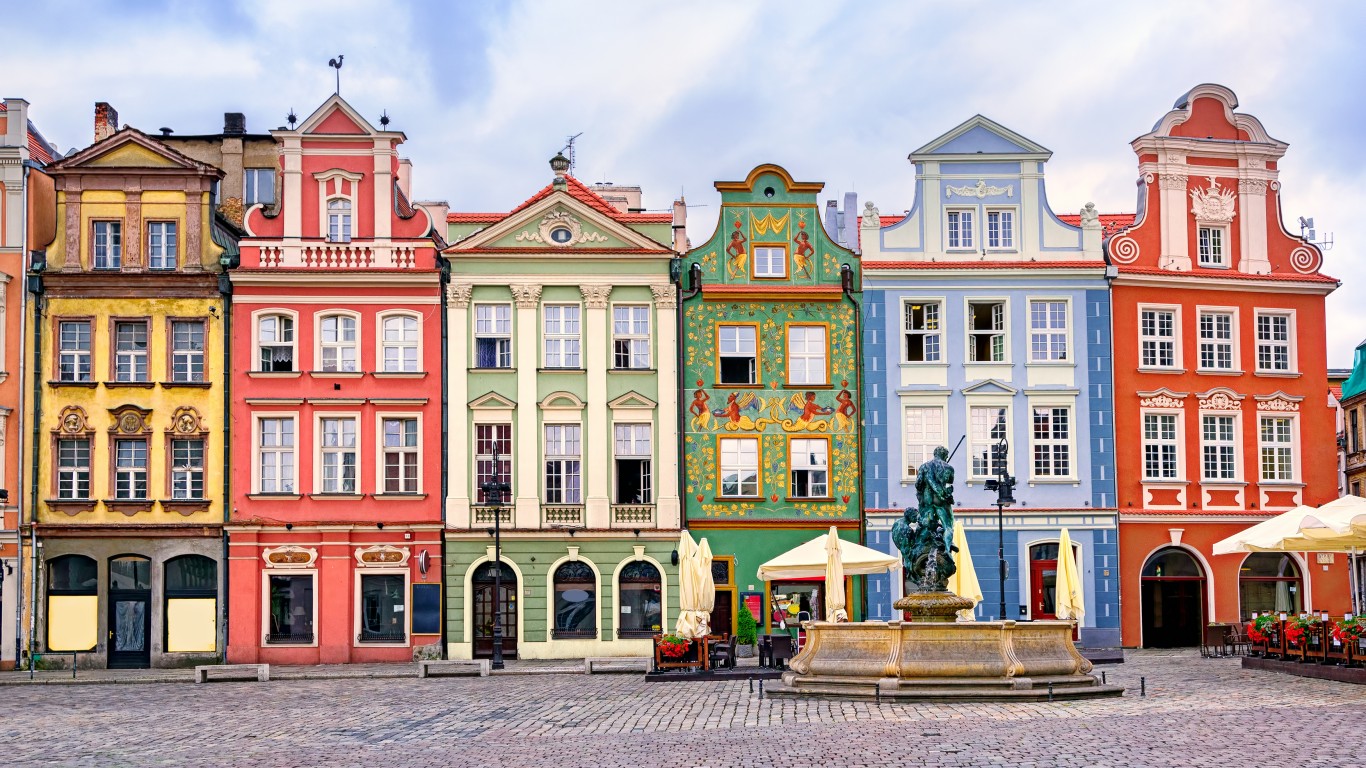
39. Poland
> Population: 37,970,874
> GDP per capita: $34,218
> Freedom of the press score in 2020: 28.7 — 62nd out of 180 (“problematic”)
> Freedom of the press score in 2019: 28.9 — 59th out of 180 (“problematic”)
> Worst area of press freedom: Media independence
> Best area of press freedom: Pluralism
Poland’s constitution protects freedom of expression and forbids censorship. Still, journalists can face up to a year in jail for defamation and this has a chilling effect on independent media outlets in the country.
TVP, one of the three TV networks that dominate the landscape in Poland, is state owned and in 2015, the controlling party introduced a bill that would allow ministers to appoint the network head. The network has effectively become a propaganda machine and non-compliant employees are terminated. In most of the 50 wealthiest countries in the world, the press has more freedom than in Poland.
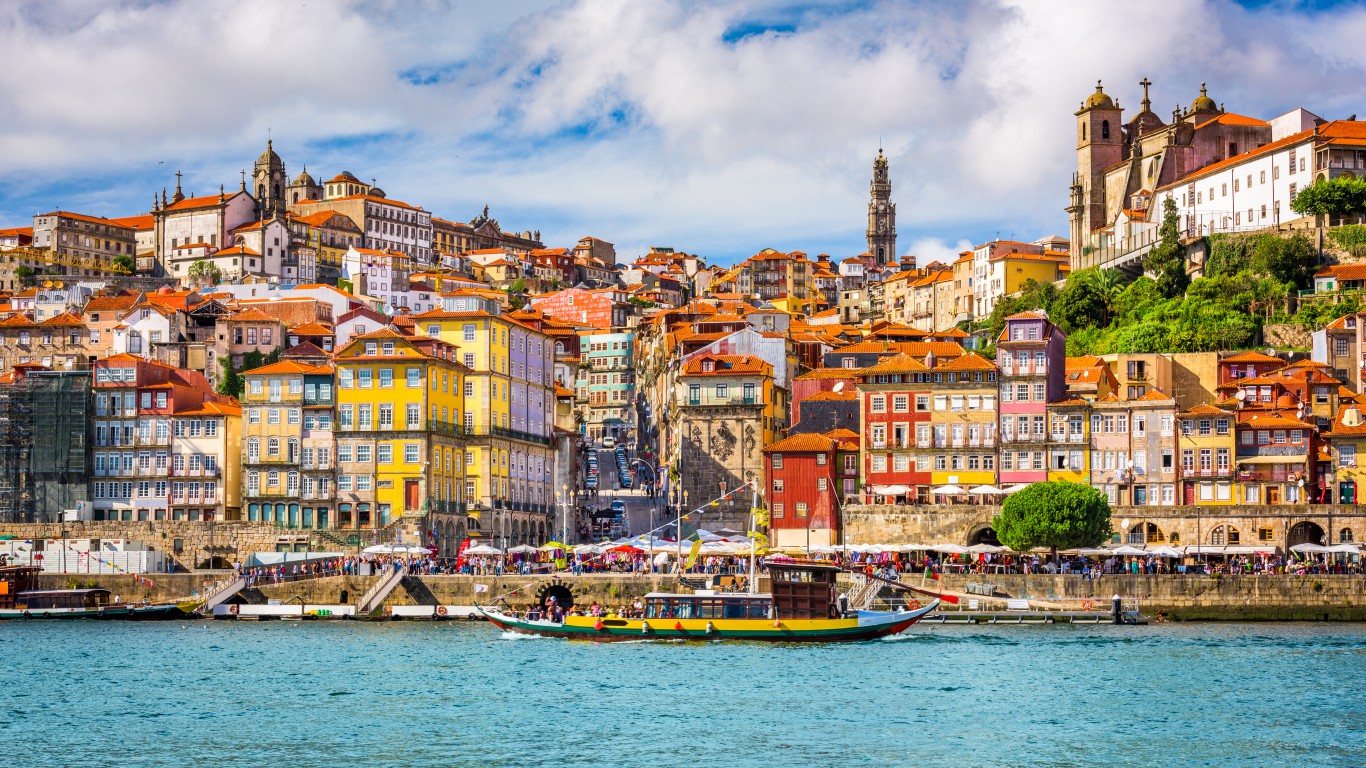
38. Portugal
> Population: 10,269,417
> GDP per capita: $36,471
> Freedom of the press score in 2020: 11.8 — 10th out of 180 (“good”)
> Freedom of the press score in 2019: 12.6 — 12th out of 180 (“good”)
> Worst area of press freedom: Media independence
> Best area of press freedom: Legislative framework
Press freedom — protected under the national constitution — is exemplary in Portugal. Though defamation is illegal in the country, prosecutions are not common. The most outspoken critics of the press in Portugal, unlike much of the rest of the world, are not politicians or the government, but rather soccer clubs that put media outlets in their crosshairs for reporting on potentially unflattering practices.
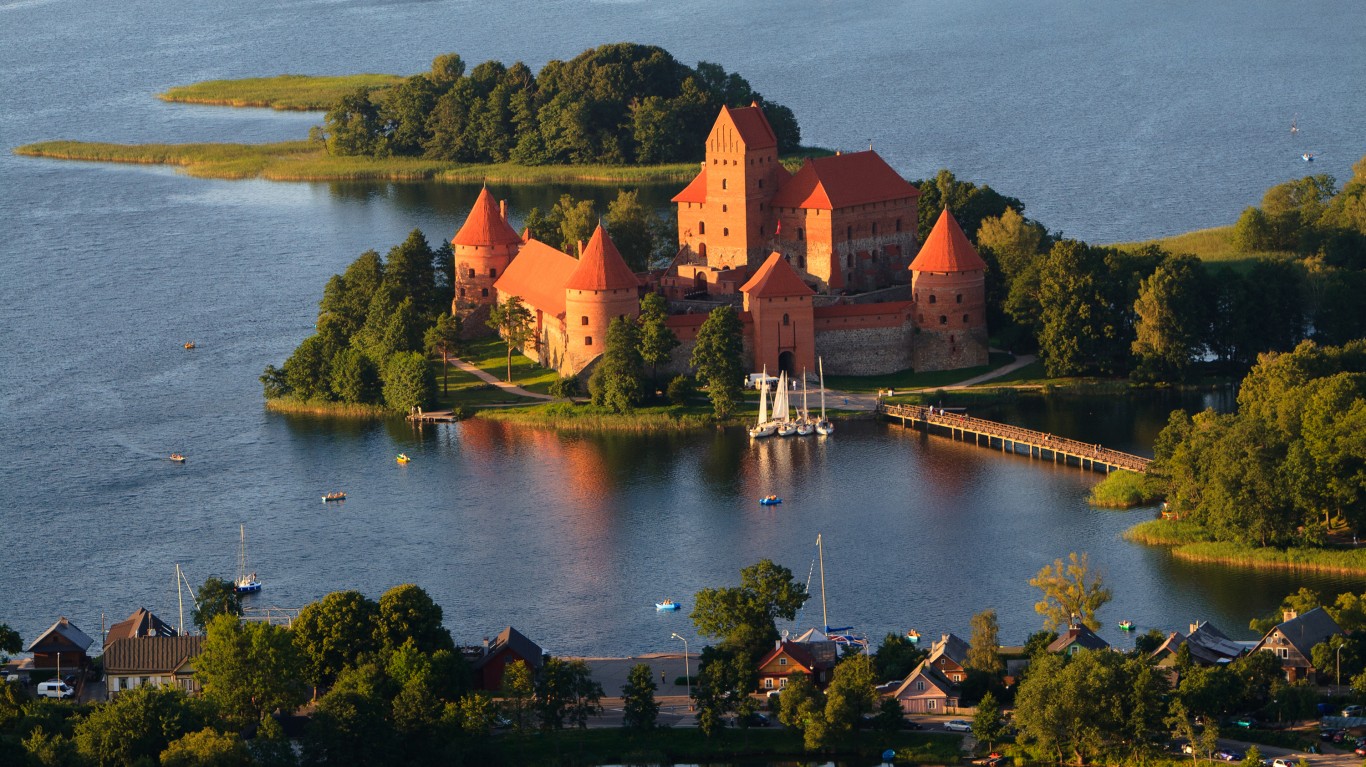
37. Lithuania
> Population: 2,786,844
> GDP per capita: $38,214
> Freedom of the press score in 2020: 21.2 — 28th out of 180 (“satisfactory”)
> Freedom of the press score in 2019: 22.1 — 30th out of 180 (“satisfactory”)
> Worst area of press freedom: Media independence
> Best area of press freedom: Legislative framework
Freedom House gives Lithuania a “free” assessment in regard to press freedom. The organization says the Baltic country, which was occupied by the Soviet Union until that nation’s dissolution in 1991, generally respects freedoms of speech and the press, though some media power brokers try to exercise political influence.
The media is on guard for attempts by the government to curtail media freedom. In 2019, new legislation permitted the government to suspend radio or television operations if they are considered a threat to the nation’s security.
[in-text-ad-2]

36. Estonia
> Population: 1,326,590
> GDP per capita: $38,811
> Freedom of the press score in 2020: 12.6 — 14th out of 180 (“good”)
> Freedom of the press score in 2019: 12.3 — 11th out of 180 (“good”)
> Worst area of press freedom: Transparency
> Best area of press freedom: Legislative framework
Estonia has one of the best environments for a free press of any country in the world. Unlike some other former Soviet republics, it has not banned rebroadcasting of Russian TV networks — although at the end of 2019, Estonia did force a pro-Russia outlet to close its office in the country, citing EU sanctions on the company’s director-general.
The county’s press freedom rating fell slightly from the previous year as right-wing politicians have verbally attacked journalists. Additionally, last year investigative and opinion journalists at the country’s oldest newspaper resigned en masse over revelations that the paper’s owner was using his position to promote a conservative agenda.
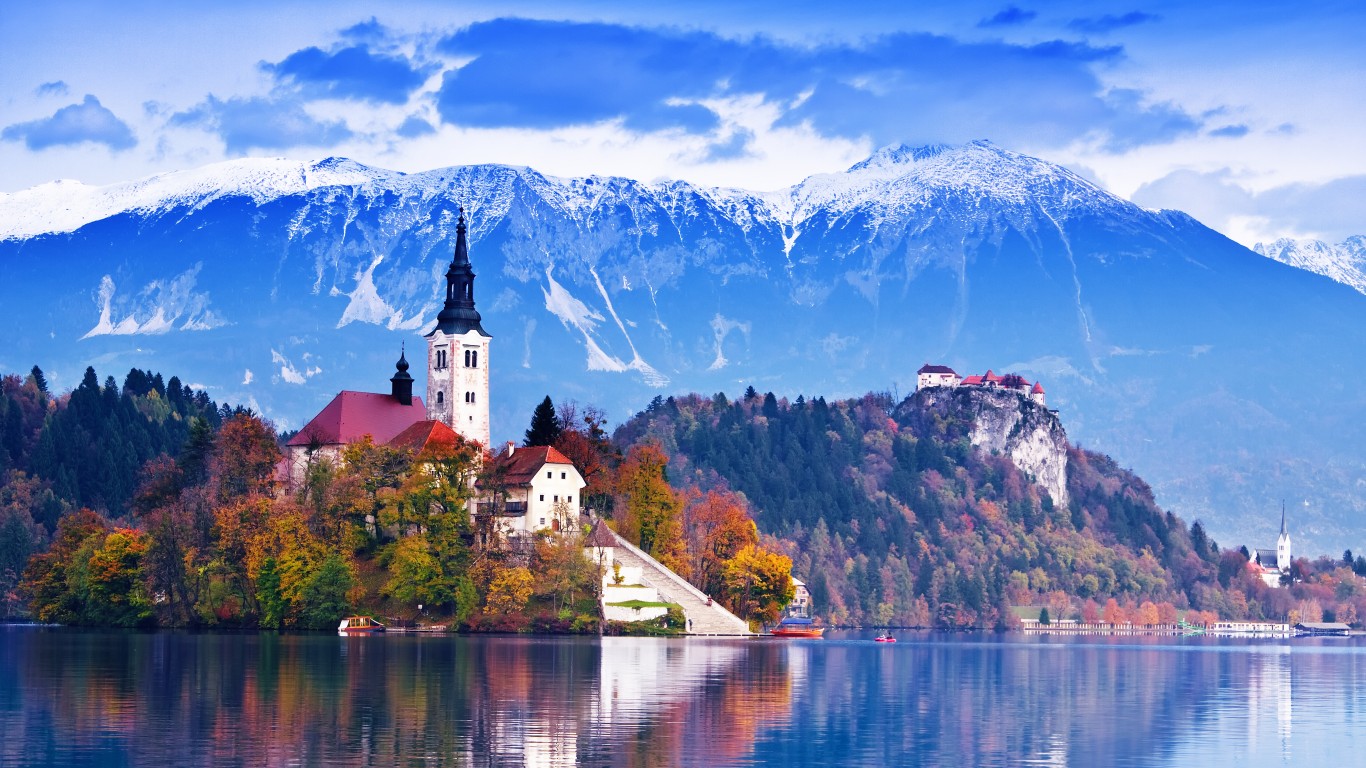
35. Slovenia
> Population: 2,087,946
> GDP per capita: $40,657
> Freedom of the press score in 2020: 22.6 — 32nd out of 180 (“satisfactory”)
> Freedom of the press score in 2019: 22.3 — 34th out of 180 (“satisfactory”)
> Worst area of press freedom: Media independence
> Best area of press freedom: Legislative framework
Freedom of speech and freedom of the press are constitutionally protected in Slovenia, a nation created out of the former Yugoslavia. However, RSF is concerned about the concentration of media sources and intimidation campaigns against journalists. Defamation is considered a crime in Slovenia and under the Mass Media Act, people who claim to be offended by a story can demand a correction. Journalists can also be legally forced to reveal their sources. State-owned entities hold stakes in media properties, making them susceptible to government interference.
[in-text-ad]
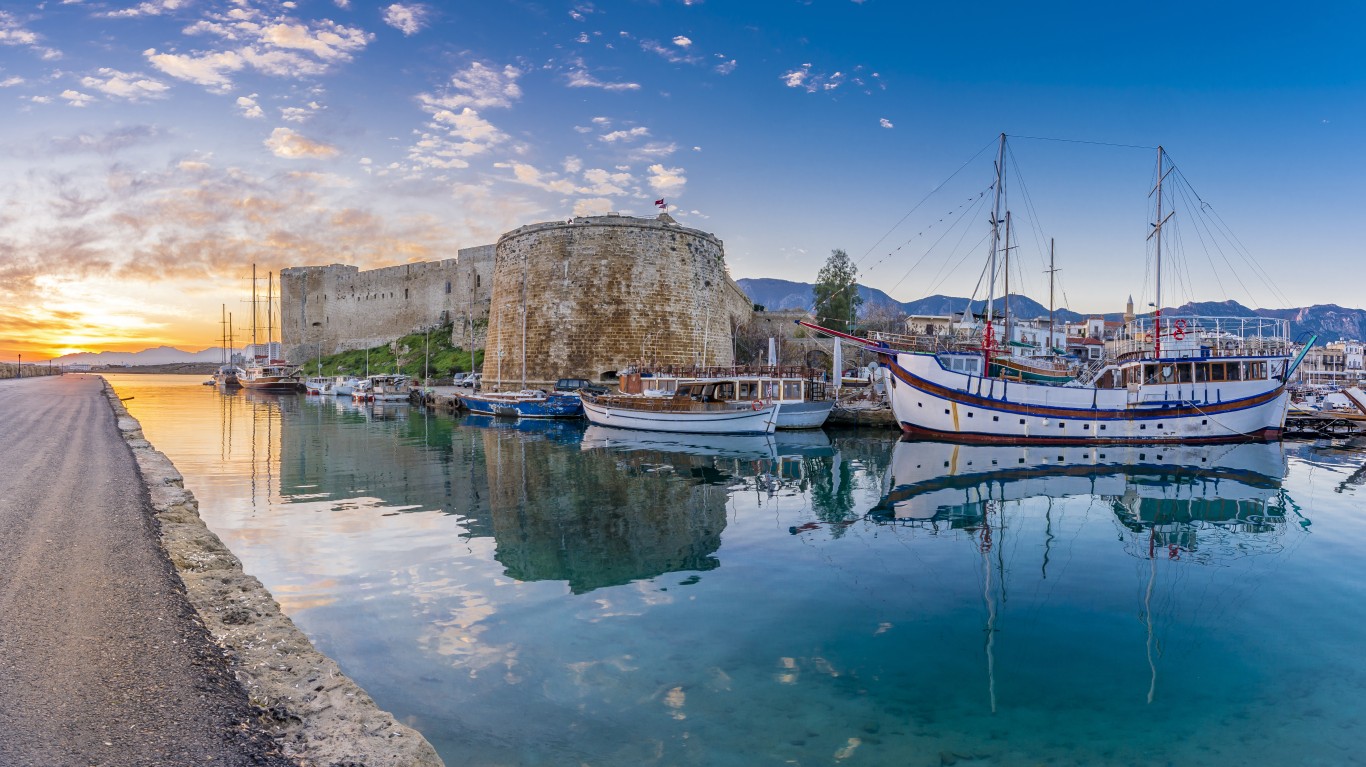
34. Cyprus
> Population: 1,198,575
> GDP per capita: $41,254
> Freedom of the press score in 2020: 20.4 — 27th out of 180 (“satisfactory”)
> Freedom of the press score in 2019: 21.7 — 28th out of 180 (“satisfactory”)
> Worst area of press freedom: Media independence
> Best area of press freedom: Legislative framework
The Cypriot media are a reflection of the island’s political division — the Turkish-controlled zone in the north has its own media outlets. Freedom of the press is guaranteed by the constitution and is generally observed. Politicians, as well as the Orthodox Church, have a lot of influence over the media.
In March 2020, a pipe bomb exploded in front of the building where outlets owned by the Cypriot news agency MC Digital Media operate. Cyprustimes.com called the explosion an attempt to “intimidate” the media.
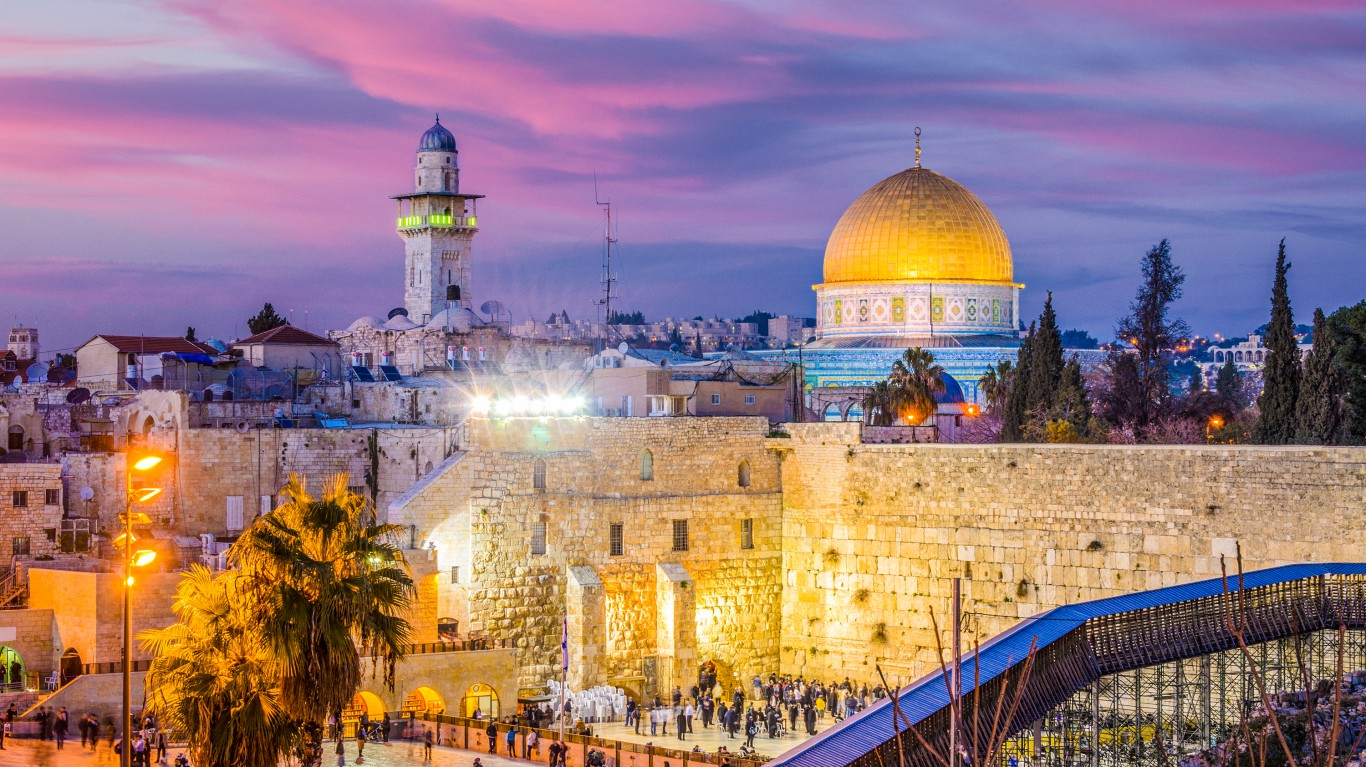
33. Israel
> Population: 9,053,300
> GDP per capita: $42,194
> Freedom of the press score in 2020: 30.8 — 88th out of 180 (“problematic”)
> Freedom of the press score in 2019: 30.8 — 88th out of 180 (“problematic”)
> Worst area of press freedom: Transparency
> Best area of press freedom: Infrastructure
While it is a pillar of journalistic freedom in the Middle East, Israel lags behind the vast majority of wealthy countries when it comes to freedom of the press. Media outlets are often banned from covering certain subjects and journalists have been personally targeted by smear campaigns at the behest of politicians and political parties.
Few journalists cover the plight of Palestinians. Two Palestinian journalists were killed by Israeli Defense Force snipers in 2018.

32. Spain
> Population: 47,076,781
> GDP per capita: $42,214
> Freedom of the press score in 2020: 22.2 — 29th out of 180 (“satisfactory”)
> Freedom of the press score in 2019: 22.0 — 29th out of 180 (“satisfactory”)
> Worst area of press freedom: Media independence
> Best area of press freedom: Legislative framework
Although it lags behind Portugal, its neighbor to the west, Spain has a better freedom-of-the-press rating than most wealthy countries. Still, the media in Spain is increasingly becoming a target of criticism, as a rising political party is crusading against the press by harassing them and barring them from events. In politically divided Catalonia, journalists have been violently assaulted by both separatists and police alike. Investigative journalists are also increasingly targeted, having the protection of their sources overridden by judicial authorities.
[in-text-ad-2]
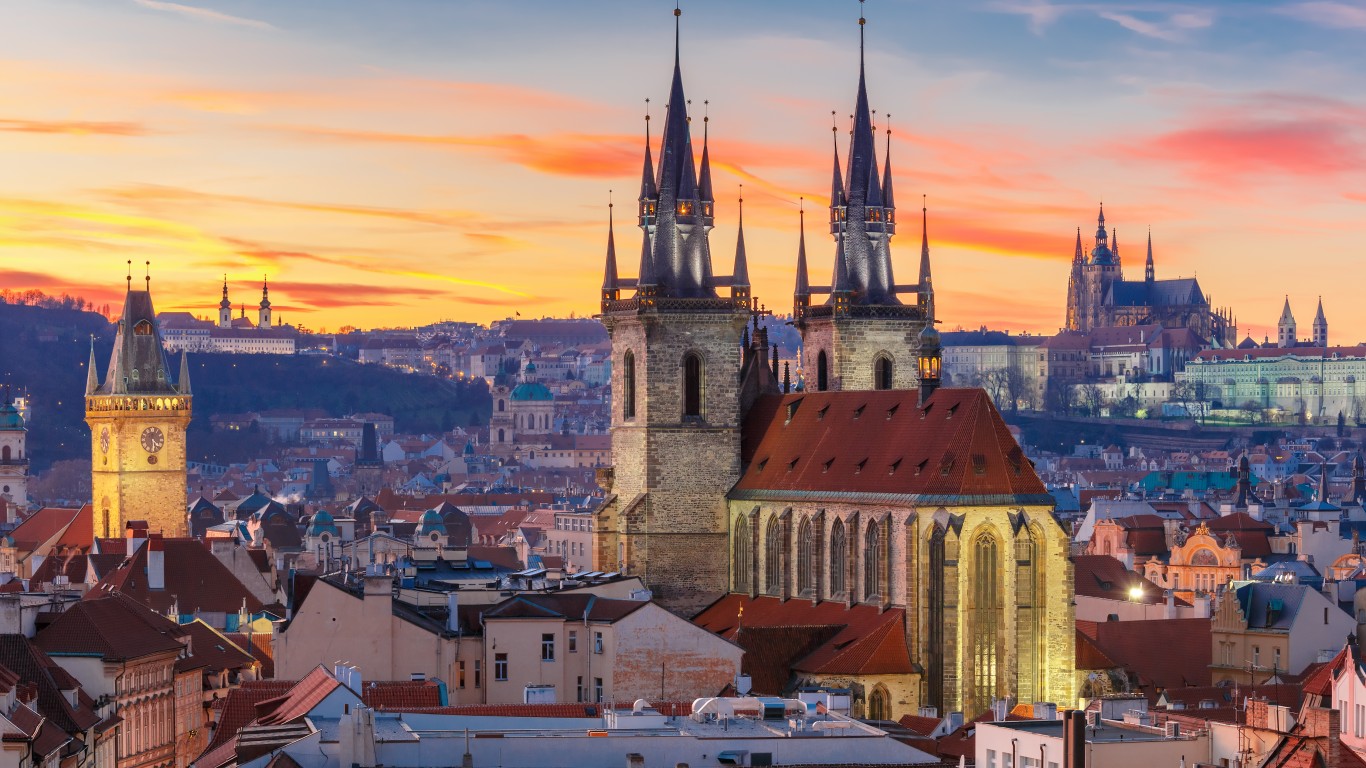
31. Czech Republic
> Population: 10,669,709
> GDP per capita: $42,576
> Freedom of the press score in 2020: 23.6 — 40th out of 180 (“satisfactory”)
> Freedom of the press score in 2019: 24.9 — 40th out of 180 (“satisfactory”)
> Worst area of press freedom: Transparency
> Best area of press freedom: Pluralism
While press freedom is better in the Czech Republic than in most of the rest of the world, the country still faces considerable challenges. Public distrust toward the media is being sown by verbal attacks from elected officials at the highest level. Additionally, the nation’s prime minister has considerable media holdings and critics allege that newspapers are becoming a tool for furthering the PM’s political interests.
There are also new concerns in the country that too many media outlets are being concentrated in the hands of a wealthy few, following the 2019 acquisition of a media conglomerate that owns some of the most influential outlets in the country by a Czech billionaire.
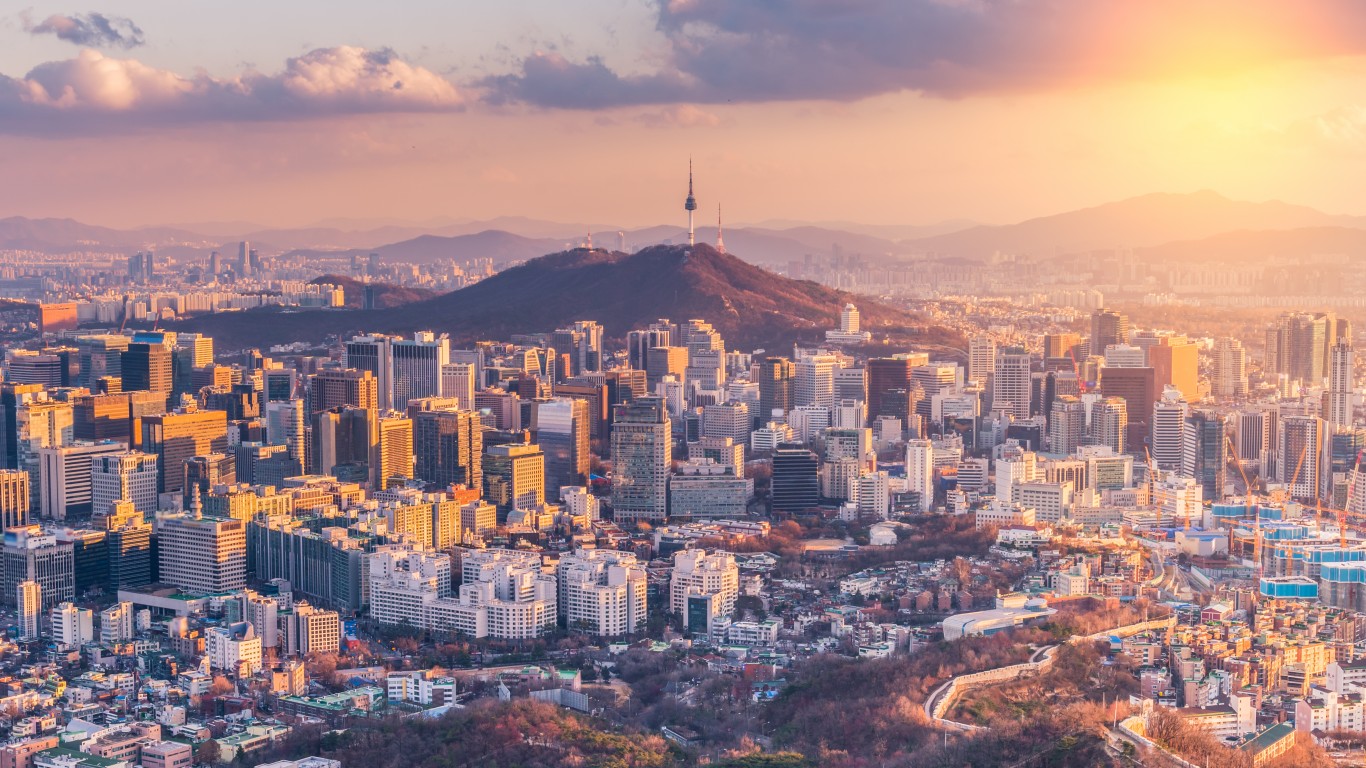
30. South Korea
> Population: 51,709,098
> GDP per capita: $43,029
> Freedom of the press score in 2020: 23.7 — 42nd out of 180 (“satisfactory”)
> Freedom of the press score in 2019: 24.9 — 41st out of 180 (“satisfactory”)
> Worst area of press freedom: Media independence
> Best area of press freedom: Legislative framework
The Republic of Korea fell more than 30 places in RSF’s World Press Freedom Index over a decade. During that time, journalists at two public broadcasters objected to the government selecting their bosses for them. This ended when the Moon administration came to power in 2016, succeeding the government of President Park Geun-hye, who was impeached for corruption. Journalists have been free to report on corruption in South Korea, however, they can be imprisoned for defamation, and the government is especially sensitive about stories involving North Korea.
[in-text-ad]
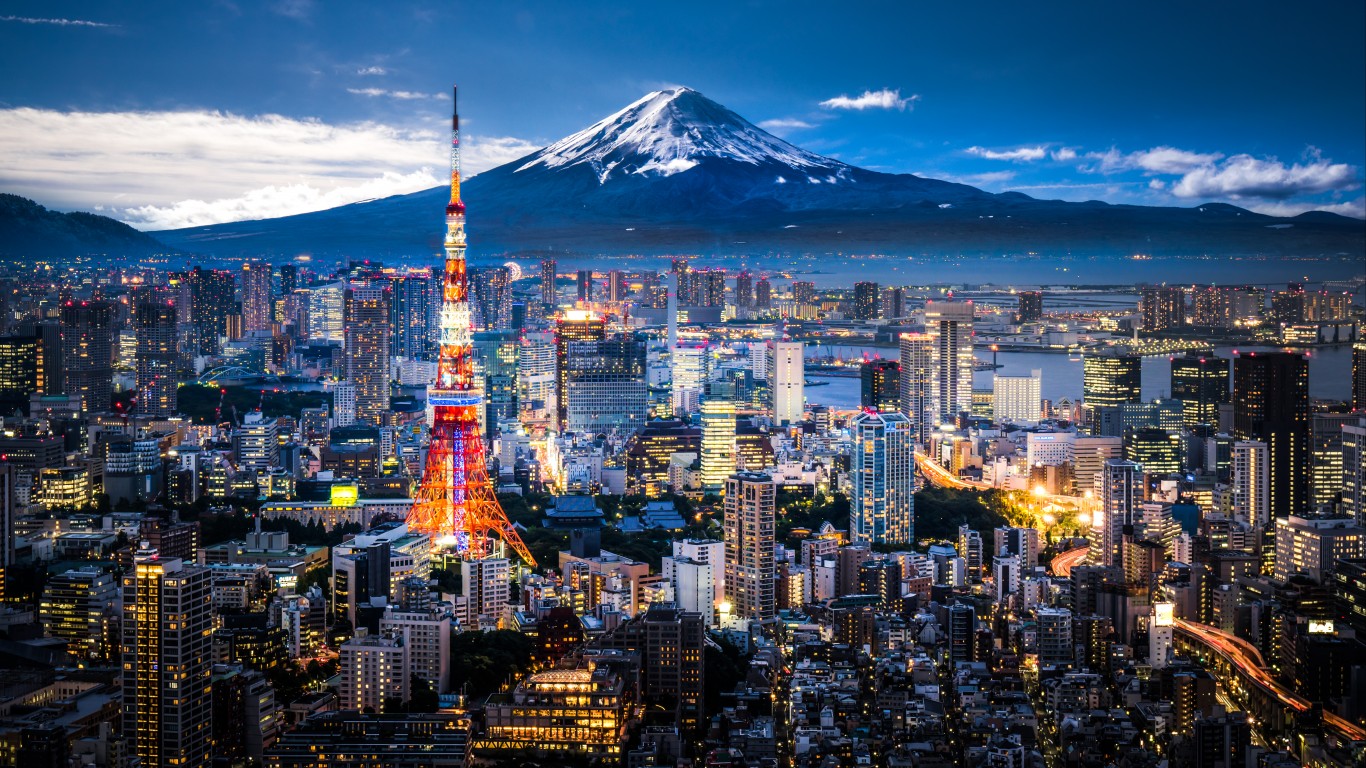
29. Japan
> Population: 126,264,931
> GDP per capita: $43,236
> Freedom of the press score in 2020: 28.9 — 66th out of 180 (“problematic”)
> Freedom of the press score in 2019: 29.4 — 67th out of 180 (“problematic”)
> Worst area of press freedom: Transparency
> Best area of press freedom: Legislative framework
Press freedom in Japan ranks behind the majority of the other richest countries in the world. A law that can put journalists and whistleblowers in prison for a decade for obtaining information in a manner deemed to be illegal has had a chilling effect and contributes to businesses undue influence over the press. Members of the press also frequently complain of a climate of mistrust and a system that discriminates against freelancers and foreign journalists since 2012, when Shinzo Abe was elected prime minister again.
Still, certain newspapers remain trusted and widely circulated in the country.
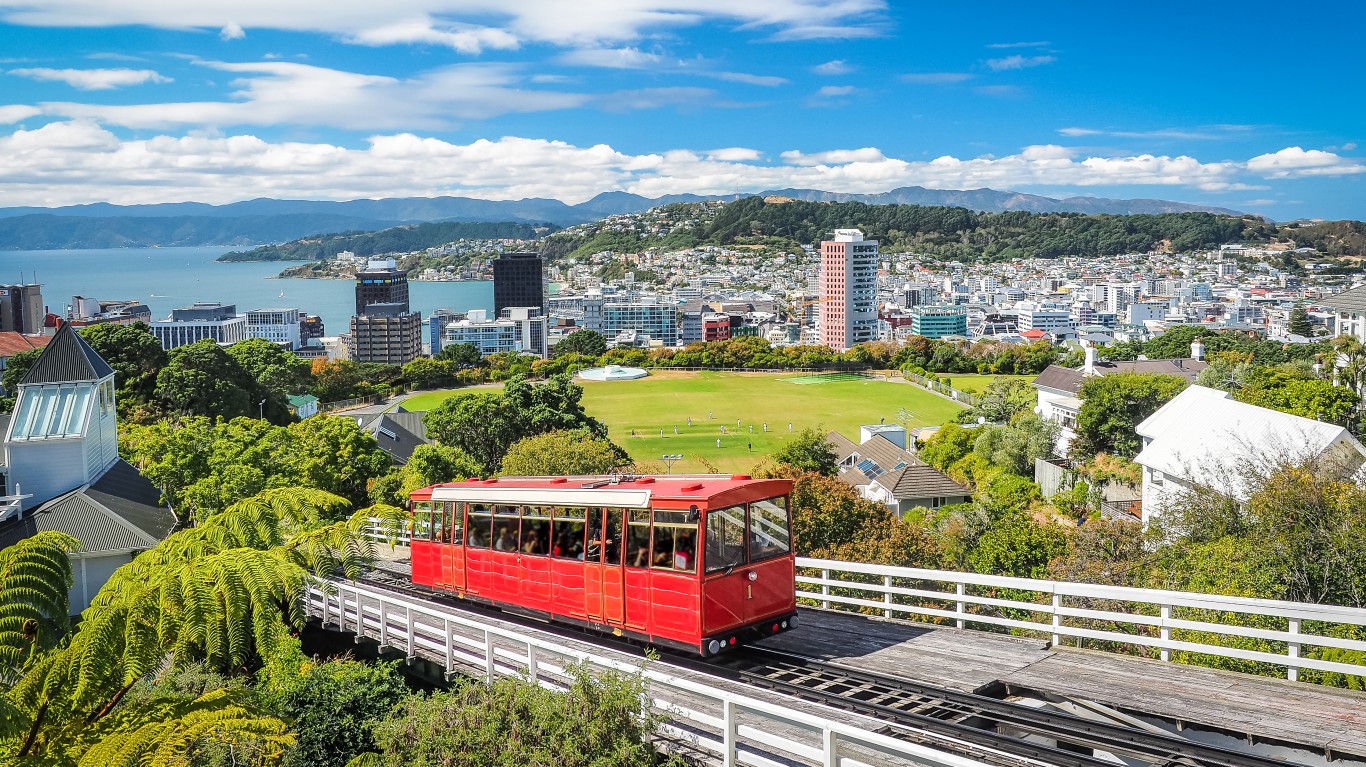
28. New Zealand
> Population: 4,917,000
> GDP per capita: $43,953
> Freedom of the press score in 2020: 10.7 — 9th out of 180 (“good”)
> Freedom of the press score in 2019: 10.8 — 7th out of 180 (“good”)
> Worst area of press freedom: Media independence
> Best area of press freedom: Environment and self-censorship
New Zealand has been ranked ninth in the latest World Press Freedom Index, falling two places since last year. The report says the country’s media is free, but “its independence and pluralism are often undermined by the profit imperatives of media groups trying to cut costs.”
Concerns about the Official Information Act have been raised as it prevents journalists from doing their job properly by allowing government agencies to take a long time before responding to information requests and also permitting them to charge for such information.
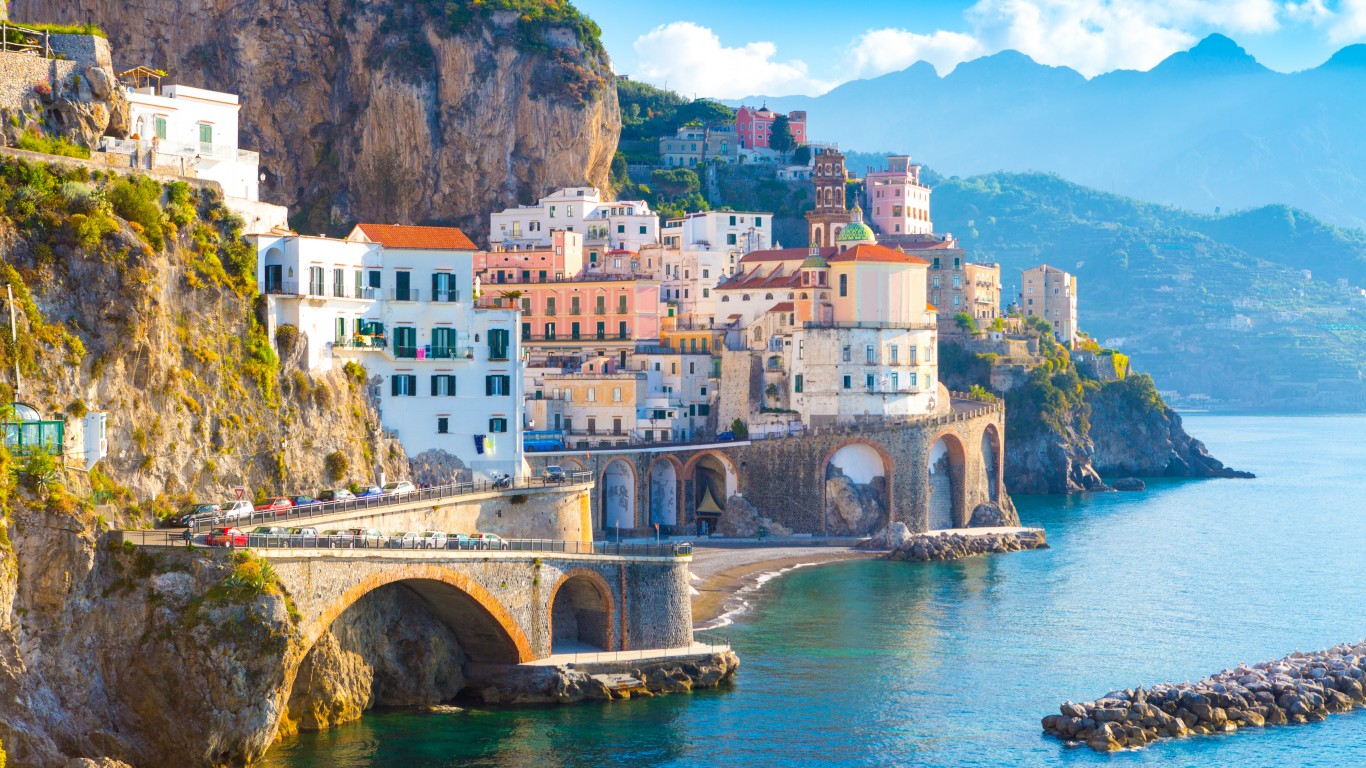
27. Italy
> Population: 60,297,396
> GDP per capita: $44,197
> Freedom of the press score in 2020: 23.7 — 41st out of 180 (“satisfactory”)
> Freedom of the press score in 2019: 25.0 — 43rd out of 180 (“satisfactory”)
> Worst area of press freedom: Media independence
> Best area of press freedom: Infrastructure
Although Italy has moved up two spots in the World Press Freedom Index, and the environment in which journalists are working is still “satisfactory,” according to the RSF, intimidation against reporters is common. As of 2020, about 20 Italian journalists are under 24/7 police protection because of mafia threats or attempts on their lives.
Italy, ranked 41st out of 180 countries, has among the worst rankings in Europe, with only about 10 countries on the continent faring worse. Though politicians are nicer to journalists than in previous years, reporters are still verbally and physically targeted by the far right Five Star Movement, which is part of the government coalition.
[in-text-ad-2]

26. Malta
> Population: 502,653
> GDP per capita: $45,652
> Freedom of the press score in 2020: 30.2 — 81st out of 180 (“problematic”)
> Freedom of the press score in 2019: 29.7 — 77th out of 180 (“problematic”)
> Worst area of press freedom: Media independence
> Best area of press freedom: Infrastructure
Though Freedom House gives Malta a “free” assessment, the assassination in 2017 of journalist Daphne Caruana Galizia, who was investigating government links to dodgy investment deals, rocked the the Mediterranean island nation and it slipped four spots on the RSF World Press Freedom Index to 81st. Massive protests over how the inquiry into Galizia’s death was handled and revelations of extensive government corruption led to the resignation of Prime Minister Joseph Muscat. Despite a change in government, the media claims state interference such as unlawful detention of journalists has continued.
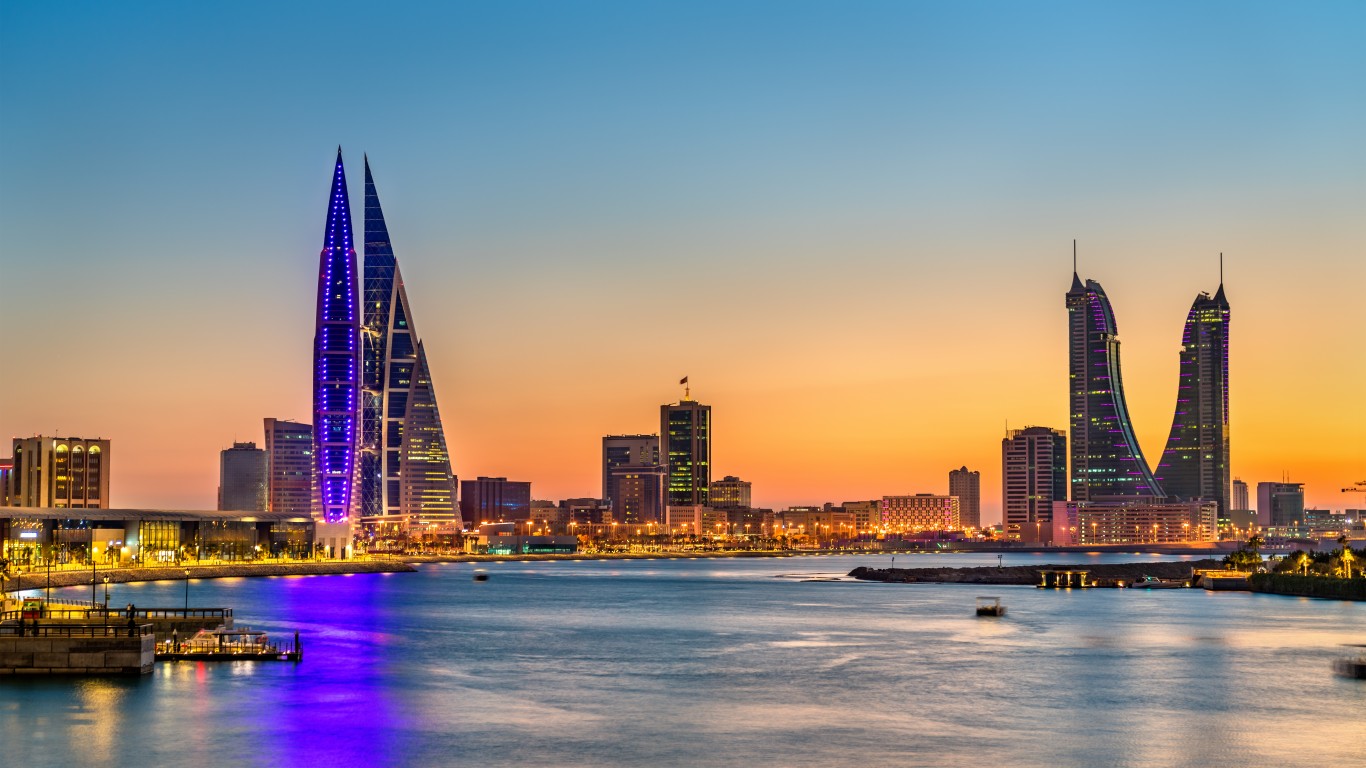
25. Bahrain
> Population: 1,641,172
> GDP per capita: $46,892
> Freedom of the press score in 2020: 60.1 — 169th out of 180 (“very serious”)
> Freedom of the press score in 2019: 61.3 — 167th out of 180 (“very serious”)
> Worst area of press freedom: Transparency
> Best area of press freedom: Infrastructure
Media outlets and journalists in Bahrain are under strict official control. The major TV and radio networks are owned by the state and avoid criticism of the ruling class. A critical newspaper was shut down in 2017. Freedom House said in 2018 that legislation is used to detain or jail critical journalists and online activists.
RSF called Bahrain “notorious for jailing many journalists, especially photographers and cameramen.” Dissent or criticism of the government or its policies is basically illegal. Foreign journalists face many obstacles before being granted a press visa to the kingdom.
[in-text-ad]
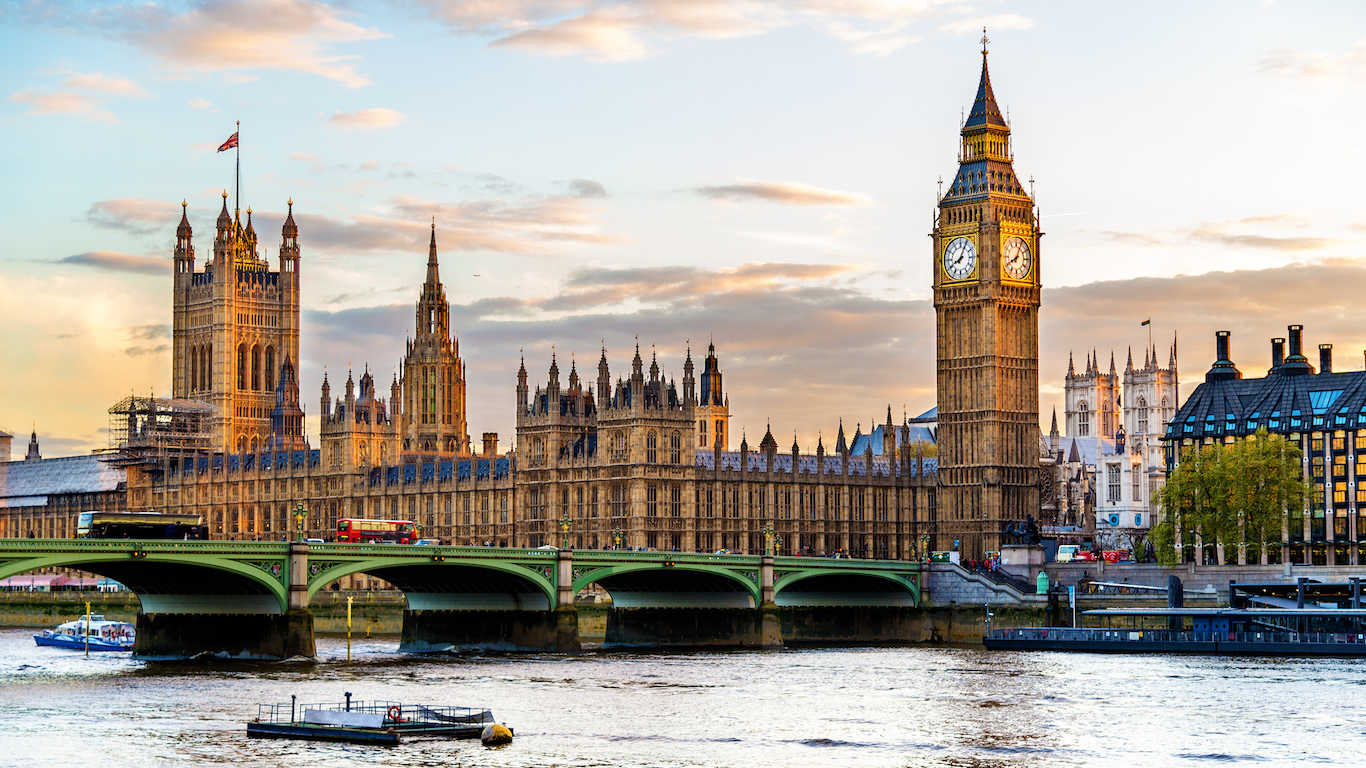
24. United Kingdom
> Population: 66,834,405
> GDP per capita: $48,710
> Freedom of the press score in 2020: 22.9 — 35th out of 180 (“satisfactory”)
> Freedom of the press score in 2019: 22.2 — 33rd out of 180 (“satisfactory”)
> Worst area of press freedom: Media independence
> Best area of press freedom: Infrastructure
Journalists in the United Kingdom are free to report on all aspects of life and virtually all political opinions are reflected in the media. The country, home to the world-renowned BBC, recently co-hosted a Global Conference for Media Freedom and has taken on the role of co-chair of the new Media Freedom Coalition. However, it is not without some problems relating to press freedom.
Recently, the country’s Conservative Party threatened a review of BBC’s license fee that all households with a TV pay, and a review of the publicly owned, public service network Channel 4.
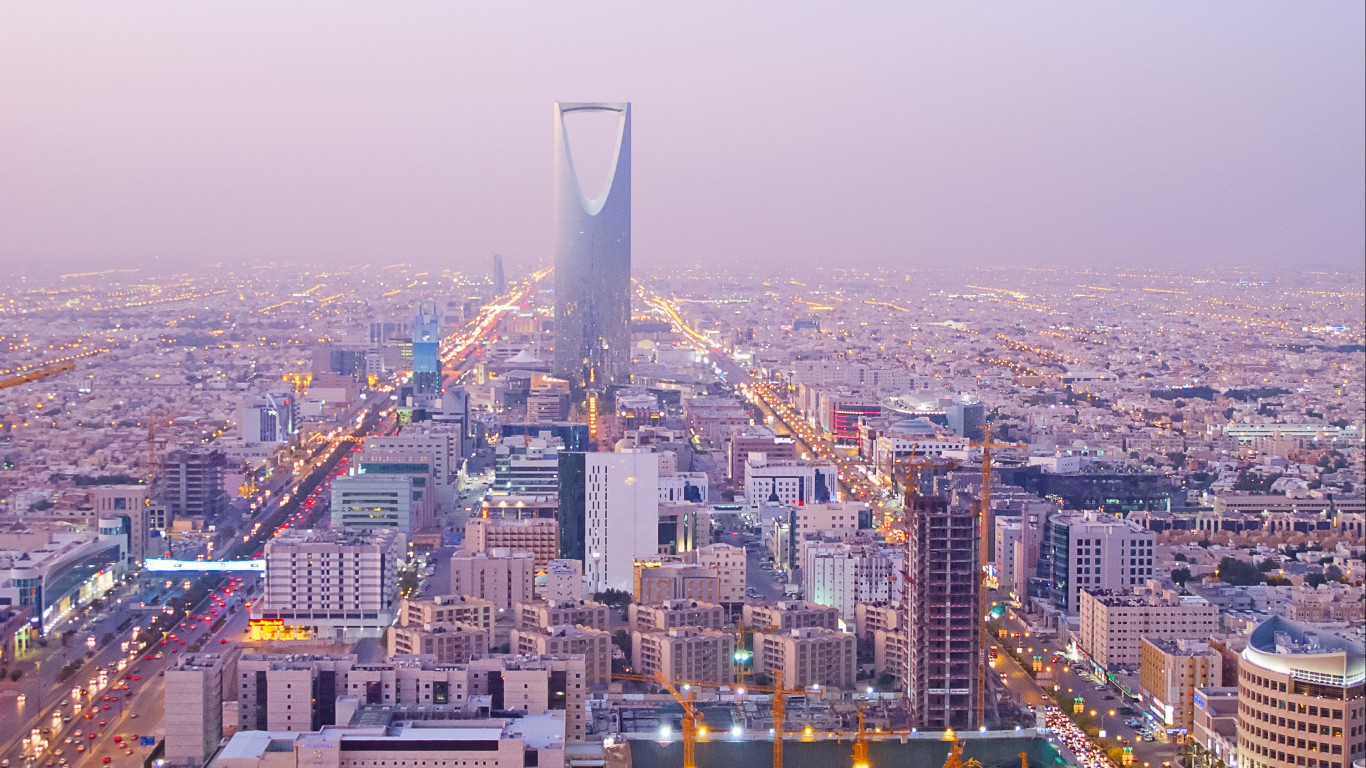
23. Saudi Arabia
> Population: 34,268,528
> GDP per capita: $48,908
> Freedom of the press score in 2020: 62.1 — 170th out of 180 (“very serious”)
> Freedom of the press score in 2019: 65.9 — 172nd out of 180 (“very serious”)
> Worst area of press freedom: Transparency
> Best area of press freedom: Pluralism
There is no press freedom in Saudi Arabia as there are no independent media outlets and journalists are under close surveillance, according to RSF. Criticism of the government or royal family is not allowed and self-censorship is prevalent. Jamal Khashoggi, a Washington Post journalist often critical of the crown prince of Saudi Arabia, Mohammed bin Salman, was murdered inside the Saudi consulate in Istanbul, Turkey. A 2019 UN report found “credible evidence” that the crown prince and other senior officials were responsible for the killing.
The government admits to widespread internet censorship, targeting several kinds of articles including those from political sites.
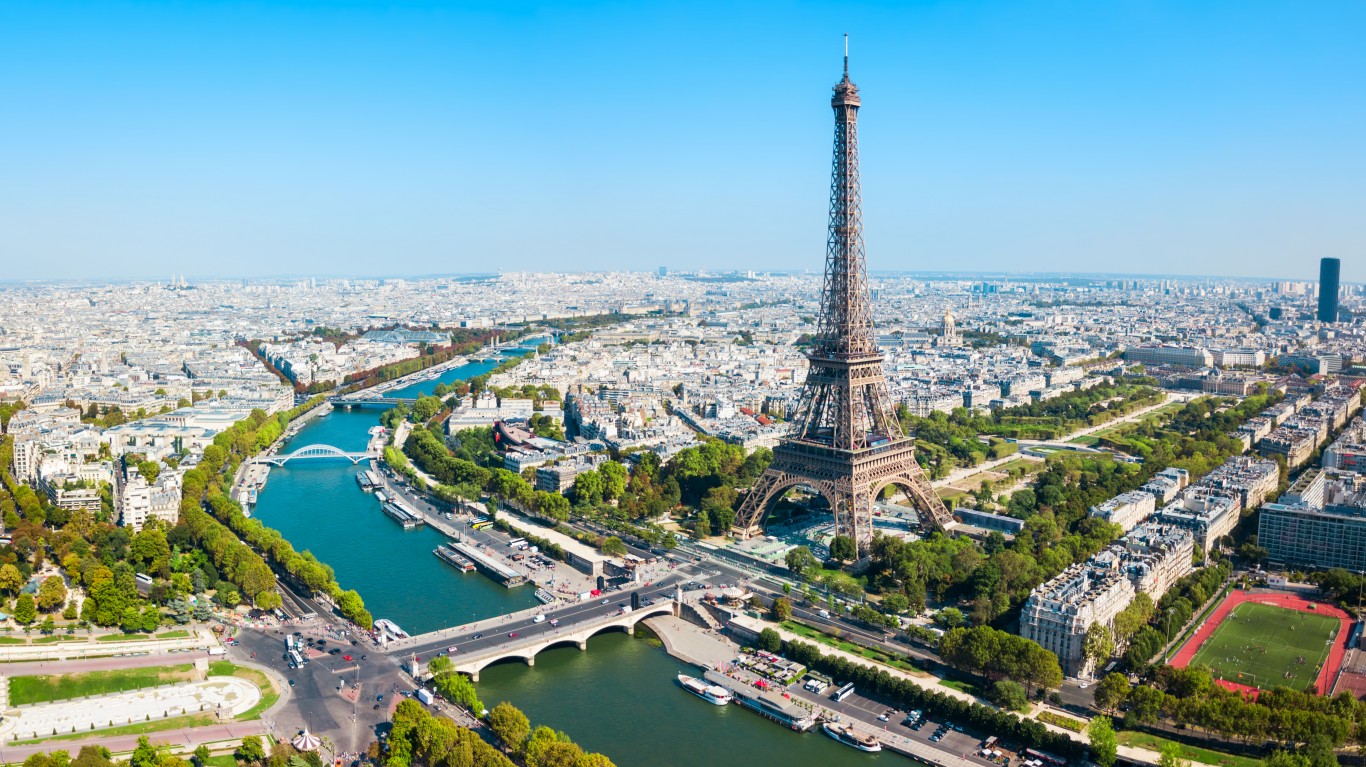
22. France
> Population: 67,059,887
> GDP per capita: $49,435
> Freedom of the press score in 2020: 22.9 — 34th out of 180 (“satisfactory”)
> Freedom of the press score in 2019: 22.2 — 32nd out of 180 (“satisfactory”)
> Worst area of press freedom: Transparency
> Best area of press freedom: Legislative framework
The French press operates with little restraint and there is a diversity of media in France, although there is some concern at RSF about the concentration of media in the hands of a few companies. Violence against journalists increased in 2019 as many in the media were tear-gassed or injured while covering protests by the anti-tax demonstrators from the Gilets Jaunes (Yellow Vest) movement. RSF also noted a surge in judicial interference intended to force reporters covering sensitive stories to reveal sources. Twelve people at the French satirical magazine Charlie Hebdo were killed in 2015 by Islamic extremists after the publication published cartoons they considered blasphemous.
[in-text-ad-2]

21. Finland
> Population: 5,520,314
> GDP per capita: $51,324
> Freedom of the press score in 2020: 7.9 — 2nd out of 180 (“good”)
> Freedom of the press score in 2019: 7.9 — 2nd out of 180 (“good”)
> Worst area of press freedom: Media independence
> Best area of press freedom: Legislative framework
Before Finland dropped to third place in 2017’s World Press Freedom Index, the country was No. 1 for seven years in a row. Since then, Finland has moved up again, maintaining second place since 2019. Several measures were taken in 2019 by the government to limit the targeting of journalists with the purpose of silencing them. However, existing regulations are vague and weak, according to RSF. Police and courts have refused to take on big cases and therefore review of applicable laws and strong precedent cases is urgently required.
The organization also notes that journalists in Finland are not immune to pressure, giving as an example some politicians who have encouraged behavior aimed at suppressing voices in social media.

20. Canada
> Population: 37,589,262
> GDP per capita: $51,342
> Freedom of the press score in 2020: 15.3 — 16th out of 180 (“satisfactory”)
> Freedom of the press score in 2019: 15.7 — 18th out of 180 (“satisfactory”)
> Worst area of press freedom: Transparency
> Best area of press freedom: Legislative framework
Canada has been vigorous in defending press freedom. This was underscored by a law passed in 2017 that says journalists cannot be required to reveal confidential sources unless a judge is convinced the information can’t be obtained any other way or it is in the public interest that the source be revealed.
In 2019, Canada and the United Kingdom created the Media Freedom Coalition in July 2019, an international alliance that champions and protects press freedom.
[in-text-ad]

19. Kuwait
> Population: 4,207,083
> GDP per capita: $51,912
> Freedom of the press score in 2020: 34.3 — 109th out of 180 (“problematic”)
> Freedom of the press score in 2019: 33.9 — 108th out of 180 (“problematic”)
> Worst area of press freedom: Transparency
> Best area of press freedom: Pluralism
Similar to other Persian Gulf countries, Kuwait ranks relatively low in the 2020 World Press Freedom Index, but it’s the least repressive among them, according to RSF. State broadcasters work in cooperation with privately owned outlets and criticism of the emir and the government is not tolerated. The cyber-crime law applies to bloggers and online journalists, and they have to apply to the government for licences.
There are many arrests and convictions of bloggers and online activists. They face charges of destabilizing the country if they make any derogatory comments about the emir, the royal family, its allies, or religion.
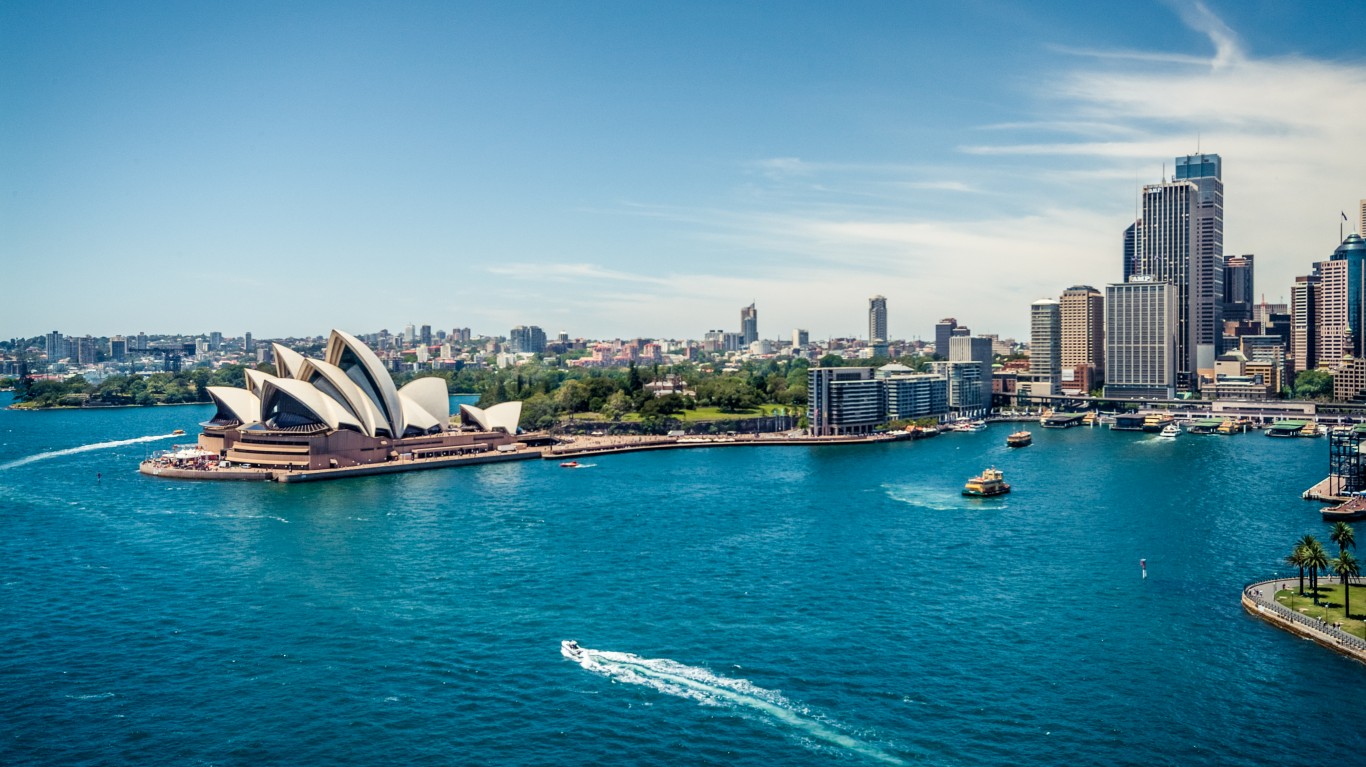
18. Australia
> Population: 25,364,307
> GDP per capita: $53,320
> Freedom of the press score in 2020: 20.2 — 26th out of 180 (“satisfactory”)
> Freedom of the press score in 2019: 16.6 — 21st out of 180 (“satisfactory”)
> Worst area of press freedom: Transparency
> Best area of press freedom: Legislative framework
Though press freedom is not mentioned directly in its constitution, the media have historically had free rein to operate in Australia, which is regarded as “free” by Freedom House. Even so, journalists were reminded of the fragility of press freedom in 2019 when the home of a reporter and the headquarters of state-run Australian Broadcasting Corporation were raided by police based on claims of national security following reporting of alleged misconduct of Australian troops in Afghanistan. Australia also has among the strictest defamation laws in a liberal democracy.
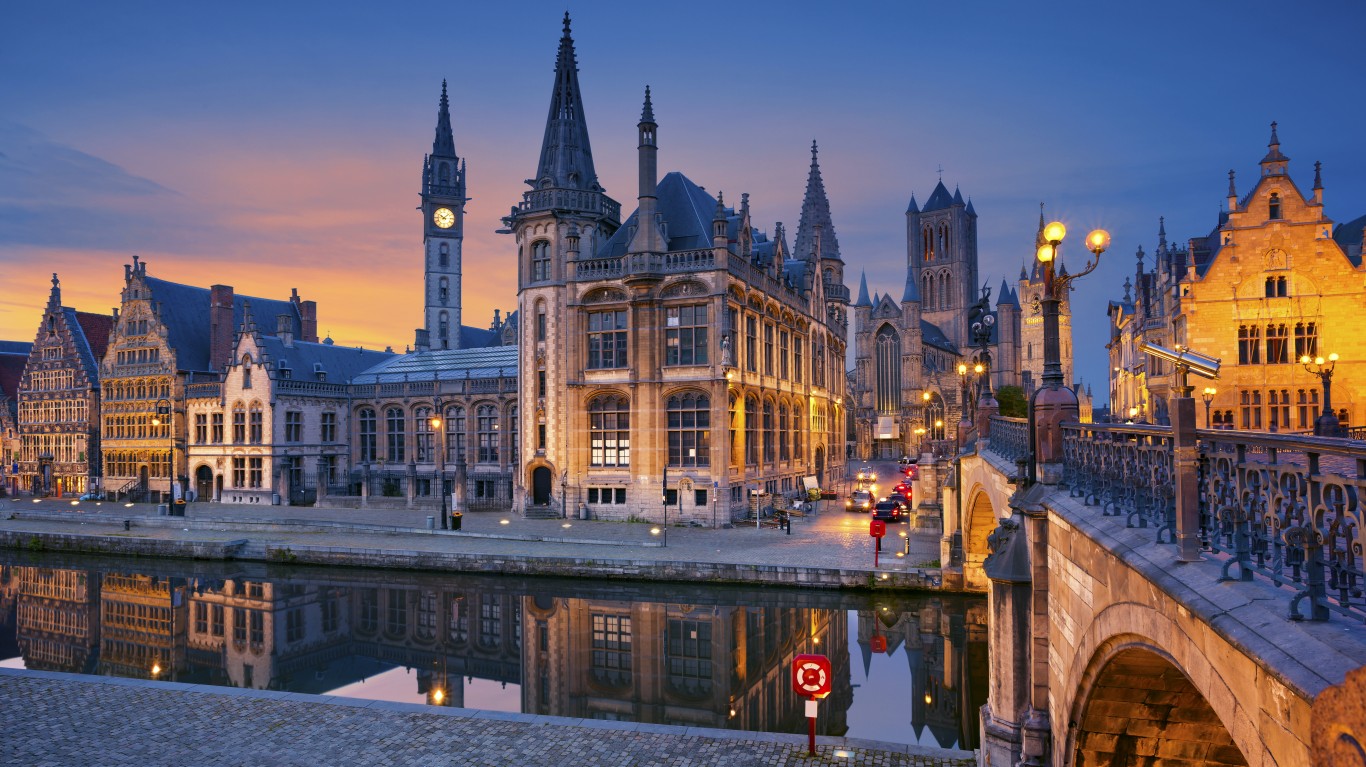
17. Belgium
> Population: 11,484,055
> GDP per capita: $54,545
> Freedom of the press score in 2020: 12.6 — 12th out of 180 (“good”)
> Freedom of the press score in 2019: 12.1 — 9th out of 180 (“good”)
> Worst area of press freedom: Environment and self-censorship
> Best area of press freedom: Legislative framework
Belgium’s constitution is very precise about guaranteeing press freedom. It states that “the press is free; censorship may never be established and no security may be demanded from writers, publishers or printers [and] where the author is known and resides in Belgium, the publisher, printer or distributor may not be prosecuted.”
Though historically the media has been free in Belgium, the situation for journalists is worsening, according to RSF. In an unprecedented move, reporters with a Flemish-language TV station protested the lack of resources and budget cuts imposed by the Flemish government. Another protest addressed the sudden dismissal of journalists from L’Avenir, who were investigating a financial scandal involving the company that owns the newspaper.
[in-text-ad-2]

16. Sweden
> Population: 10,285,453
> GDP per capita: $55,815
> Freedom of the press score in 2020: 9.3 — 4th out of 180 (“good”)
> Freedom of the press score in 2019: 8.3 — 3rd out of 180 (“good”)
> Worst area of press freedom: Transparency
> Best area of press freedom: Environment and self-censorship
In Sweden, ranked fourth in press freedom by the RSF, the media are mostly privately owned, though the RSF points out that five media companies own more than 50% of local media outlets. Swedish public media are funded by taxes rather than licensing.
About one-third of Swedish journalists say they have been targets of online threats. Exiled Iranian journalists in Sweden have received threats from the Iranian government. Law enforcement takes an active role in combating attacks against the press.
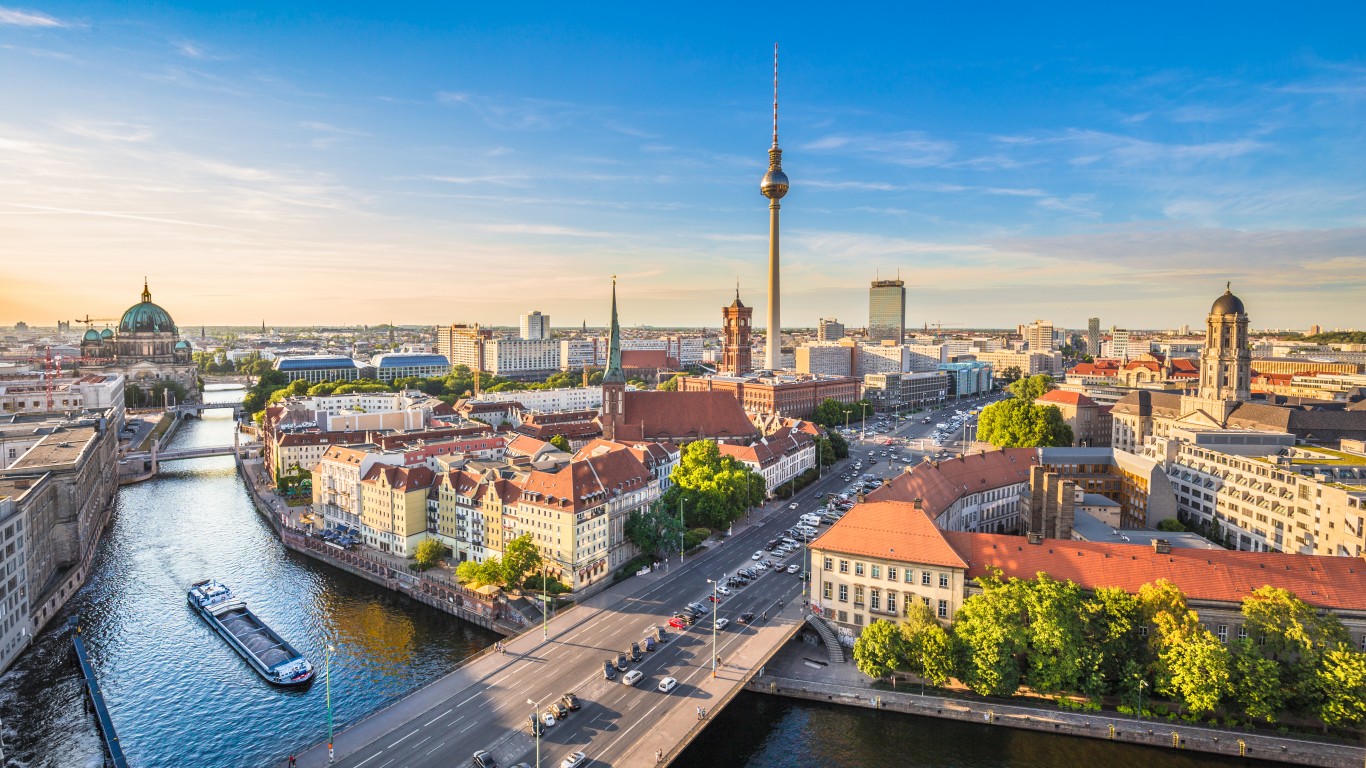
15. Germany
> Population: 83,132,799
> GDP per capita: $56,052
> Freedom of the press score in 2020: 12.2 — 11th out of 180 (“good”)
> Freedom of the press score in 2019: 14.6 — 13th out of 180 (“good”)
> Worst area of press freedom: Media independence
> Best area of press freedom: Legislative framework
Germany, which has the biggest population and the largest and most competitive television market in the European Union, improved its press freedom score and ranking since 2019. Germany, which has a history of controlling the media under the Nazi regime and later in East Germany under communist rule, is serious about preserving the freedom of the press — the constitution guarantees it. In May 2020, the German Federal Constitutional Court ruled mass surveillance unconstitutional. This makes spying on foreign journalists illegal and protects informants who want to remain confidential.
However, the RSF warns of a slow but steady erosion of media pluralism for economic reasons, as well as weak laws on information access.
[in-text-ad]

14. Austria
> Population: 8,877,067
> GDP per capita: $59,111
> Freedom of the press score in 2020: 15.8 — 18th out of 180 (“satisfactory”)
> Freedom of the press score in 2019: 15.3 — 16th out of 180 (“satisfactory”)
> Worst area of press freedom: Media independence
> Best area of press freedom: Legislative framework
The constitution and the Media Law of 1981 underpin press freedom in Austria. However, libel and slander laws remain in place and shield politicians and government officials. Given its history of anti-Semitism, Austrian law forbids any form of neo-Nazism or anti-Semitism, as well as denial of the Holocaust. Media ownership in Austria is still highly concentrated.
A scandal involving the chairman of the far-right Freedom Party of Austria brought down the right/far right ruling coalition led by Chancellor Sebastian Kurz, prompting the formation of a new government that included the more left-leaning Green Party. That has not stopped the government from denying the media certain information held by the government.
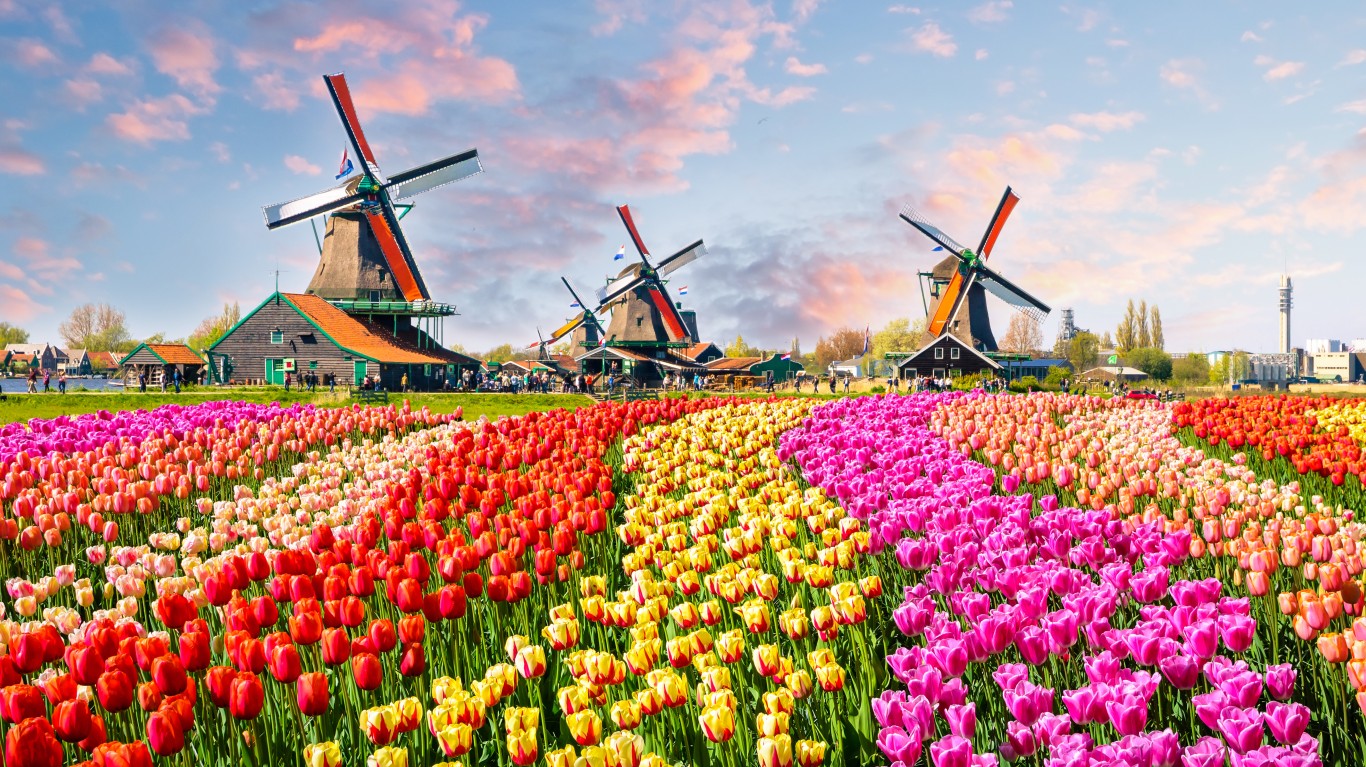
13. Netherlands
> Population: 17,332,850
> GDP per capita: $59,687
> Freedom of the press score in 2020: 10.0 — 5th out of 180 (“good”)
> Freedom of the press score in 2019: 8.6 — 4th out of 180 (“good”)
> Worst area of press freedom: Transparency
> Best area of press freedom: Legislative framework
The Netherlands, which ranks fifth in the World Press Freedom Index, belongs to the 8% of the countries that are classified as having a “good” situation. The government supports a free press, according to RSF. However, the organization warns of worrisome emerging trends. Far right populist politicians have been questioning the legitimacy of established media and aggression against journalists is a serious concern, as online attacks, including death threats, are frequent.
Freedom of the press and free speech are guaranteed by the constitution and media organizations are allocated airtime on TV and radio based on the number of members they have. Competition between commercial and public stations is fierce. In addition, people have access to a lot of domestic and foreign channels.

12. Denmark
> Population: 5,818,553
> GDP per capita: $59,830
> Freedom of the press score in 2020: 8.1 — 3rd out of 180 (“good”)
> Freedom of the press score in 2019: 9.9 — 5th out of 180 (“good”)
> Worst area of press freedom: Media independence
> Best area of press freedom: Legislative framework
The Scandinavian nation of Denmark ranks third in the RSF listing in press freedom. Denmark has a long history of freedom of expression that was included in a provision in the nation’s constitution of 1849. Danish media express a variety of opinions and are frequently critics of the government. The Danish newspaper Jyllands Posten published cartoons of the Prophet Mohamed that were later reprinted by the French satirical publication Charlie Hebdo in France.
Denmark was shaken in 2017 when Swedish journalist Kim Wall was killed in Copenhagen by a Danish man who was sentenced to life imprisonment in March 2018.
[in-text-ad-2]

11. Iceland
> Population: 361,313
> GDP per capita: $60,061
> Freedom of the press score in 2020: 15.1 — 15th out of 180 (“satisfactory”)
> Freedom of the press score in 2019: 14.7 — 14th out of 180 (“good”)
> Worst area of press freedom: Transparency
> Best area of press freedom: Legislative framework
The sparsely populated North Atlantic island, famous as much for its hot springs as for its first ranking in gender equality, has dropped slightly in the 2020 World Press Freedom Index. Iceland’s current score of 15.1 is noticeably worse than the country’s Nordic neighbors, all of which have a score of under 10.
The constitution of Iceland guarantees absolute freedom of speech and there are laws protecting whistleblowers, sources, and media independence, but relations between outlets and politicians have worsened and ownership is highly concentrated.

10. Hong Kong SAR, China
> Population: 7,507,400
> GDP per capita: $62,375
> Freedom of the press score in 2020: 30.0 — 80th out of 180 (“problematic”)
> Freedom of the press score in 2019: 29.7 — 73rd out of 180 (“problematic”)
> Worst area of press freedom: Transparency
> Best area of press freedom: Pluralism
Press freedom is under siege in Hong Kong, whose standing in the RSF rankings fell seven places to 80. The territory was designated a special administrative region following the handover to the People’s Republic of China from Great Britain in 1997. The agreement provided for freedom of expression but there has been repression by Beijing. The result has been self-censorship among journalists reluctant to criticize the communist regime.
In 2018, Victor Mallet was forced out as editor of the Financial Times Asia because he chaired an event for the Foreign Correspondents’ Club of Hong Kong that rankled the Chinese government. The Chinese Communist Party in Hong Kong controls in part or in whole two daily newspapers in the SAR.
[in-text-ad]

9. Brunei Darussalam
> Population: 433,285
> GDP per capita: $64,673
> Freedom of the press score in 2020: 49.7 — 152th out of 180 (“difficult”)
> Freedom of the press score in 2019: 51.5 — 152th out of 180 (“difficult”)
> Worst area of press freedom: Transparency
> Best area of press freedom: Infrastructure
Brunei, an absolute monarchy in which the sultan exercises executive power, shows no improvement for journalists’ freedom. In 2020, Brunei’s ranking remained at 152 out of 180 countries, though the country’s score has improved slightly. Self-censorship persists for the state-owned Radio Television Brunei and for the major daily newspapers, which the sultan’s family owns.
Repressive legislation, rendered even harsher by the introduction and enforcement of a strict version of Islamic Sharia law, discourages any content deemed critical of the royal family. Bloggers posting independently reported information can be charged with criminal defamation.
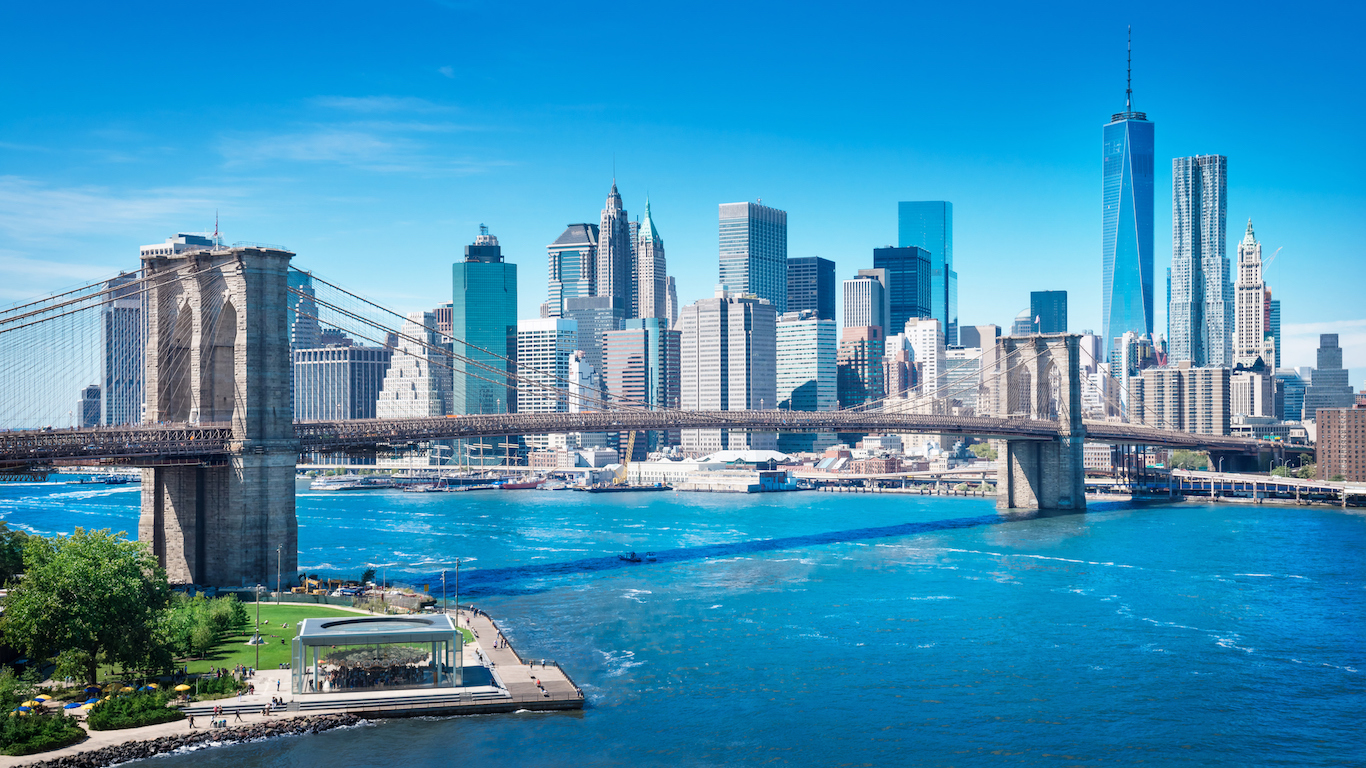
8. United States
> Population: 328,239,523
> GDP per capita: $65,281
> Freedom of the press score in 2020: 23.9 — 45th out of 180 (“satisfactory”)
> Freedom of the press score in 2019: 25.7 — 48th out of 180 (“problematic”)
> Worst area of press freedom: Transparency
> Best area of press freedom: Pluralism
Since Donald Trump became president in 2017, the chief executive and the media have had a confrontational relationship. The president has limited access to some journalists and denigrated others. He’s chided the media for what he calls “fake news.” Anti-press sentiment has found its way into public polls and a growing segment of the public does not trust the media. Although the United States has among the strongest press protections in the world, the media have become more polarized since Trump became president. This has contributed to the United States’ 45th ranking on the RSF World Press Freedom Index list.
Recent U.S. government hostility to the media predates Trump. In 2013, New York Times national security correspondent David Sanger said the Obama administration was “the most closed, control freak administration” he had ever covered.

7. Norway
> Population: 5,347,896
> GDP per capita: $66,832
> Freedom of the press score in 2020: 7.8 — 1st out of 180 (“good”)
> Freedom of the press score in 2019: 7.8 — 1st out of 180 (“good”)
> Worst area of press freedom: Media independence
> Best area of press freedom: Legislative framework
Norway has topped RSF’s Press Freedom Index since 2017. Historically, Europe’s northernmost country has ranked high in terms of freedom from censorship and pressure from government officials. The country seems to want to do even better. The government mandated a review of the conditions for freedom of speech. Those involved have to consider measures to promote public debate, stop fake news and hate speech, keep journalists safe, and counter self-censorship.
Public broadcaster NRK operates alongside major privately owned TV and radio networks. As of 2020, NRK is funded by the state budget through a dedicated tax as opposed to license fees.
[in-text-ad-2]
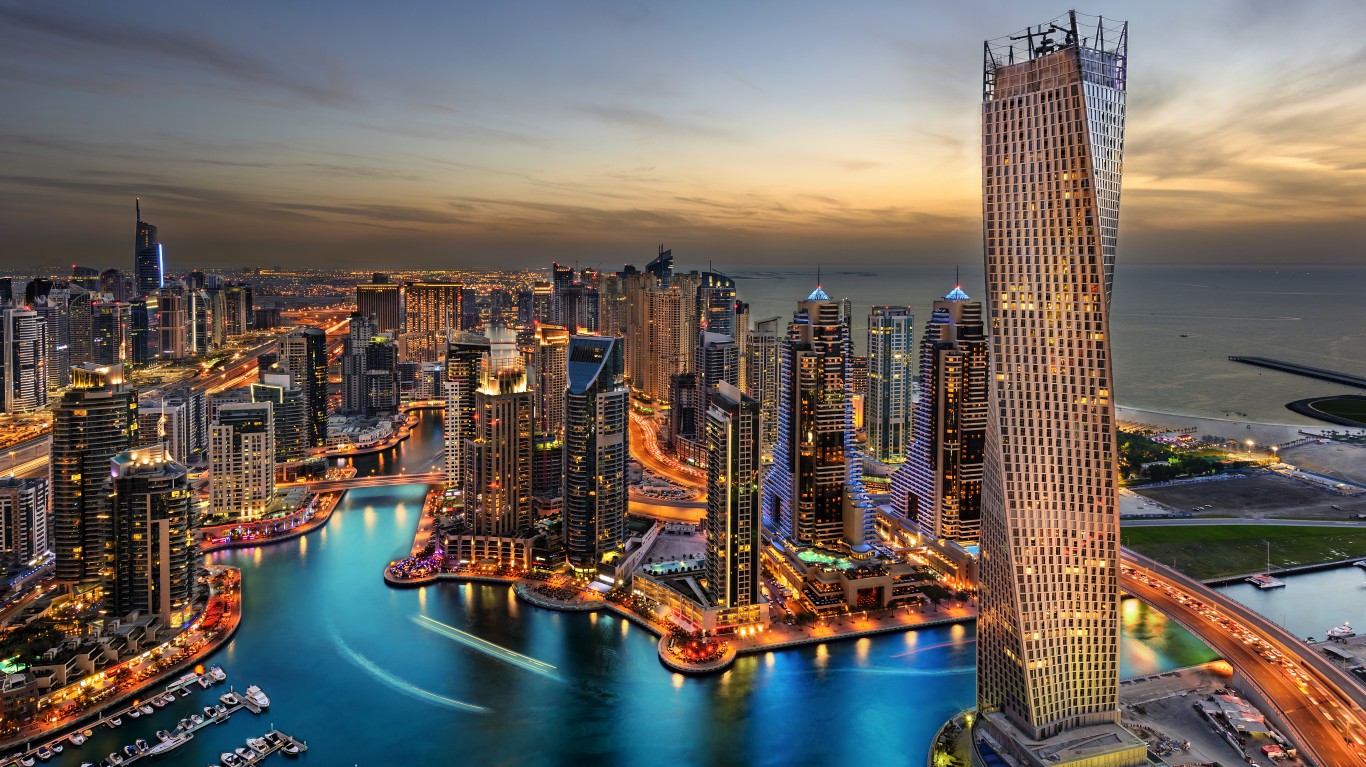
6. United Arab Emirates
> Population: 9,770,529
> GDP per capita: $69,901
> Freedom of the press score in 2020: 42.7 — 131st out of 180 (“difficult”)
> Freedom of the press score in 2019: 43.6 — 133rd out of 180 (“difficult”)
> Worst area of press freedom: Media independence
> Best area of press freedom: Infrastructure
Freedom House has determined that the United Arab Emirates is “not free” and it is ranked 131st on RSF’s World Press Freedom Index. The nation on the Arabian Peninsula guarantees press freedom under its constitution, however, a law passed in 1980 lets authorities censor local or foreign publications if they criticize UAE’s domestic policies, the economy, the ruling families, or religion. This is considered to be one of the most restrictive press laws in the world.
The UAE has pursued robust surveillance of journalists online and in 2017 imprisoned a blogger for posting “false information, rumors and lies,” which the nation said damaged the UAE’s reputation.
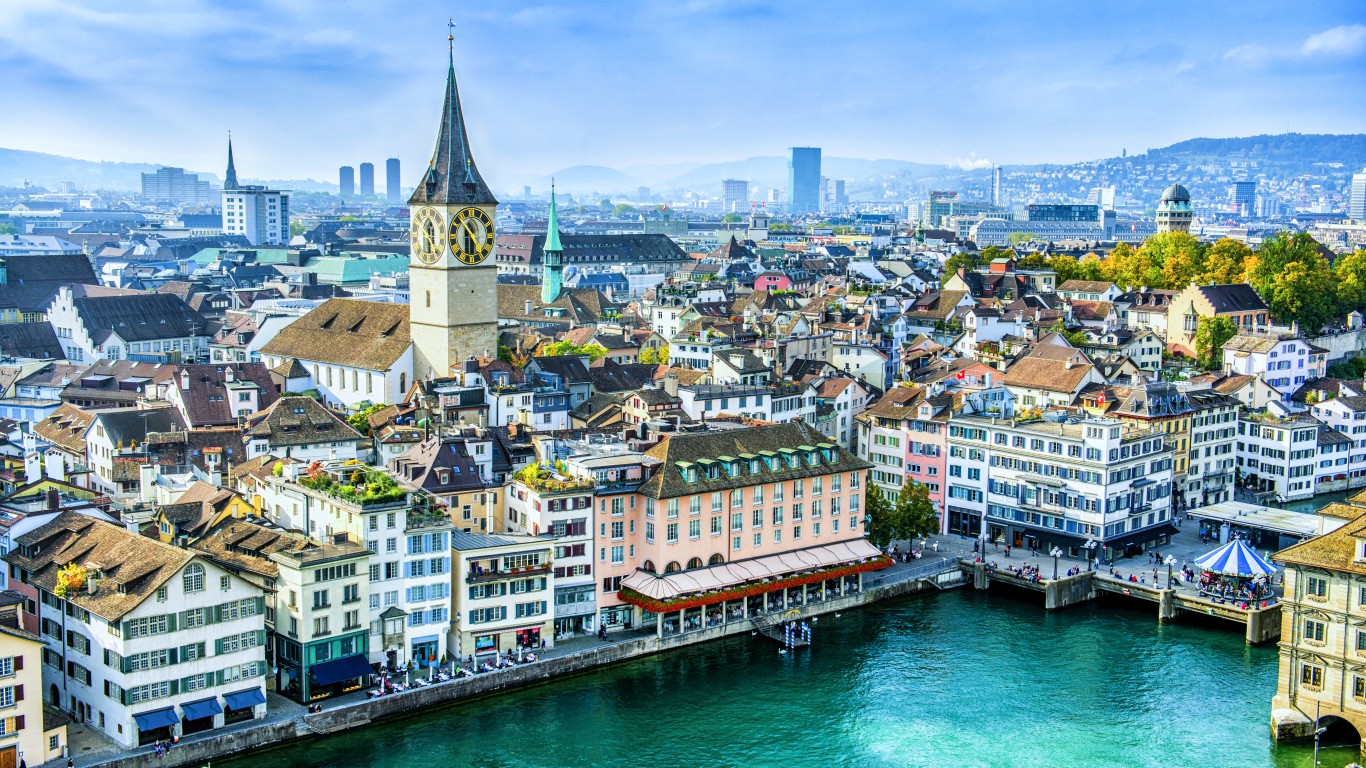
5. Switzerland
> Population: 8,574,832
> GDP per capita: $70,989
> Freedom of the press score in 2019: 10.5 — 6th out of 180 (“good”)
> Worst area of press freedom: Media independence
> Best area of press freedom: Legislative framework
om of the press score in 2020: 10.6 — 8th out of 180 (“good”)
Switzerland ranks eighth in RSF’s 2020 Global Index of Press Freedom, two spots below its placement in 2019. Though the country continues to rank high and is considered safe for journalists, financial problems in the Swiss media industry may spell trouble, according to RSF.
The media makes most of its money from TV license fees. Some funding comes from advertising. The digital revolution has hit outlets, which continue to close and content has become less diverse.
Troubles aside, Switzerland is among just 14 countries — or about 8% of the 180 nations RSF has reviewed — with a “good” situation in terms of freedom of the press.
[in-text-ad]
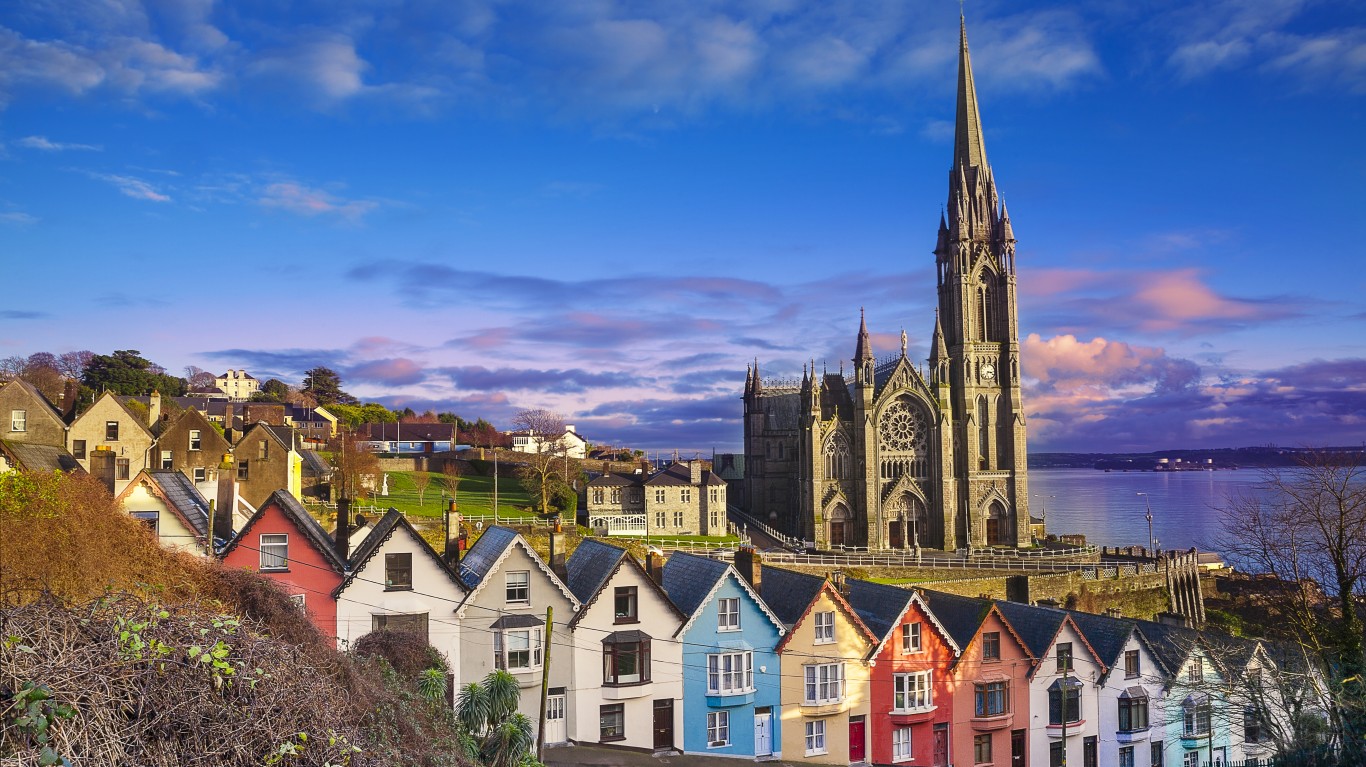
4. Ireland
> Population: 4,941,444
> GDP per capita: $88,241
> Freedom of the press score in 2020: 12.6 — 13th out of 180 (“good”)
> Freedom of the press score in 2019: 15.0 — 15th out of 180 (“satisfactory”)
> Worst area of press freedom: Transparency
> Best area of press freedom: Legislative framework
Ireland gained two spots on the RSF ranking and rose to 13th on the World Press Freedom Index. It adopted a referendum in 2018 that decriminalized blasphemy, a move that improved press freedom.
The press in Ireland is free and independent though RSF and Freedom House express concern about the concentration of media. Independent News and Media controls much of the newspaper sector, while partly state-run company RTE dominates the broadcast market. The frequent awarding of defamation damages by the courts represents a threat to press freedom in the country.

3. Qatar
> Population: 2,832,067
> GDP per capita: $96,491
> Freedom of the press score in 2020: 42.5 — 129th out of 180 (“difficult”)
> Freedom of the press score in 2019: 42.5 — 128th out of 180 (“difficult”)
> Worst area of press freedom: Transparency
> Best area of press freedom: Pluralism
Qatar is well-known for Al-Jazeera, an international TV broadcaster owned by the government. The channel has a good reputation in the Middle East and the rest of the world, but it avoids criticism of the state. In 2019, the Qatari government abruptly ordered the closure of the Doha Centre for Media Freedom, which protected journalists whose lives were in danger in their home countries.
Qatar’s press freedom score in 2020 is 42.5, which places it in the second worst category, according to RSF — “difficult situation.” Qatar authorities filter online content deemed offensive or objectionable, which includes materials from human rights organizations.
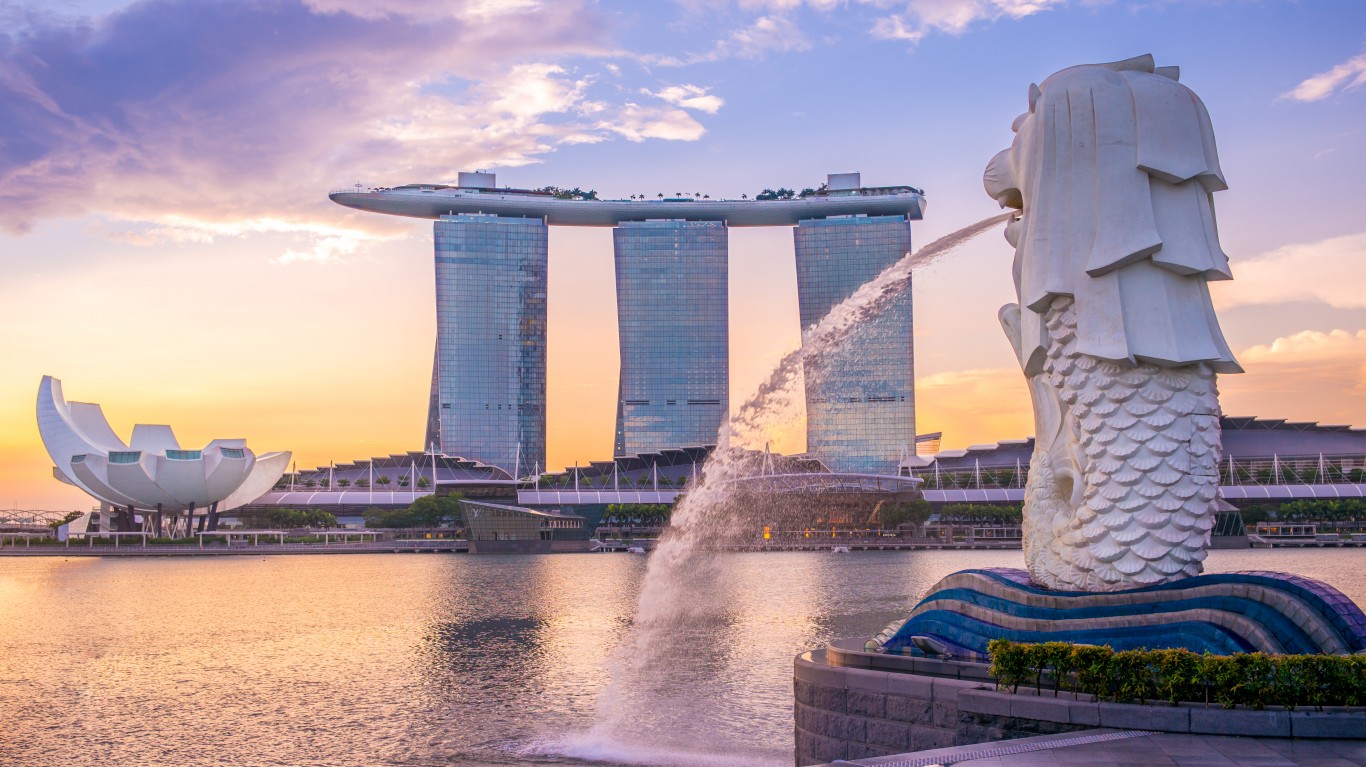
2. Singapore
> Population: 5,703,569
> GDP per capita: $101,376
> Freedom of the press score in 2020: 55.2 — 158th out of 180 (“very serious”)
> Freedom of the press score in 2019: 51.4 — 151st out of 180 (“difficult”)
> Worst area of press freedom: Media independence
> Best area of press freedom: Infrastructure
Singapore may have one of the more robust economies in Asia, but the former British colony is among the most repressive, falling seven spots in the latest World Press Freedom Index rankings to 158th. The nation only has a “partly free” assessment by Freedom House.
The Asian city-state owns all domestic newspapers, radio stations, and television channels through companies connected to the government. Singapore exercises press control using religious and racial tensions and the fear of terrorism to clamp down on the media. Many journalists self-censor and media outlets and bloggers have been penalized for stories and opinions considered to be seditious or defamatory. Defamation lawsuits are common in Singapore. Online news providers must obtain licenses and may have to remove certain content at the request of regulators.
[in-text-ad-2]

1. Luxembourg
> Population: 619,896
> GDP per capita: $121,293
> Freedom of the press score in 2019: 15.7 — 17th out of 180 (“satisfactory”)
> Worst area of press freedom: Media independence
> Best area of press freedom: Legislative framework
m of the press score in 2020: 15.5 — 17th out of 180 (“satisfactory”)
Luxembourg ranks 17th in the 2020 Global Index of Press Freedom, the same rank as in 2019. The country’s journalists still don’t have the right to free access and information. The Luxembourgish association of professional journalists (ALJP) has criticised the government for its limited and centralized information policy. In 2019, journalists at the state-owned radio accused government officials of influencing how the station was being run.
RSF has described press freedom in Luxembourg, the richest country in the world by GDP per capita, as pluralist but dependent on business interests.
Methodology
To determine the degree of freedom available to journalists in the world’s richest countries, 24/7 Wall St. ranked 2020 World Press Freedom Index scores from Paris-based international non-profit organization Reporters Without Borders (RSF) in the 50 countries with the highest gross domestic product (GDP) per capita.
RSF administered a survey to media professionals, lawyers, sociologists, and other experts around the world and combined these survey results with quantitative data on abuses and violence against journalists and media outlets. This data was collected in 2019 for 180 countries. The scores range between 0 (good situation) and 100 (very serious situation).
Gross domestic product (GDP) per capita in current international dollars for the 194 countries with available data was obtained from the World Bank. All GDP figures are for 2019, the latest year for which data is available.
Macao SAR, China, San Marino, Aruba, The Bahamas, Puerto Rico, Sint Maarten (Dutch part) — the 1st, 6th, 13th, 39th, 42nd, 44th, 48th richest regions based on World Bank GDP per capita — were not among the 180 countries and territories reviewed by RSF.
We also considered gross national income (GNI) per capita where available, an income measurement that includes income from residents, businesses, and foreign sources. GNI was also obtained from the World Bank. The countries’ population figures also came from the World Bank and are as of 2019.
If you’re one of the over 4 Million Americans set to retire this year, you may want to pay attention. Many people have worked their whole lives preparing to retire without ever knowing the answer to the most important question: am I ahead, or behind on my goals?
Don’t make the same mistake. It’s an easy question to answer. A quick conversation with a financial advisor can help you unpack your savings, spending, and goals for your money. With Zoe Financial’s free matching tool, you can connect with trusted financial advisors in minutes.
Why wait? Click here to get started today!
Thank you for reading! Have some feedback for us?
Contact the 24/7 Wall St. editorial team.